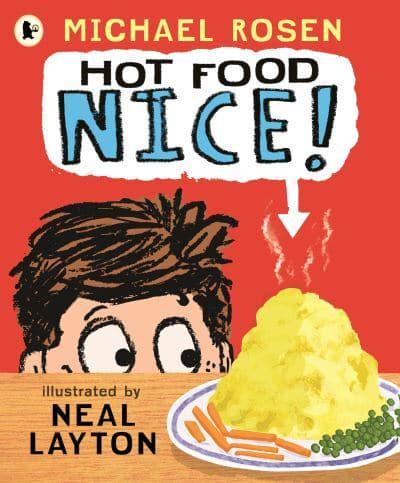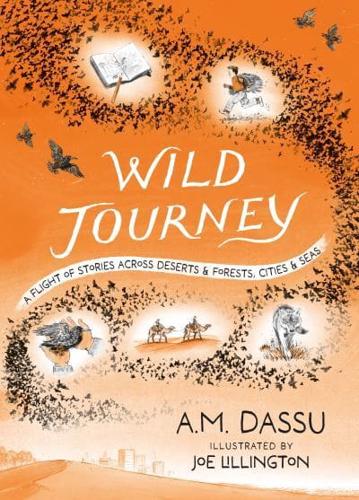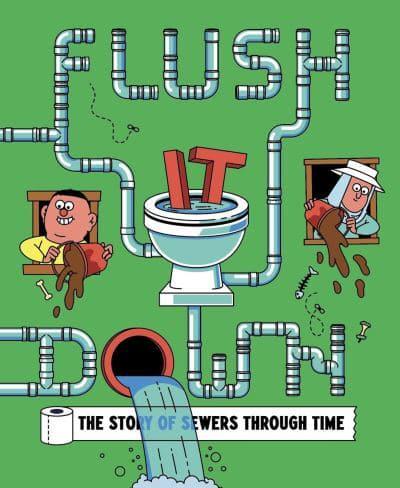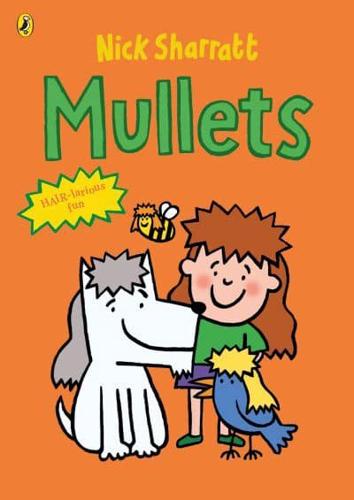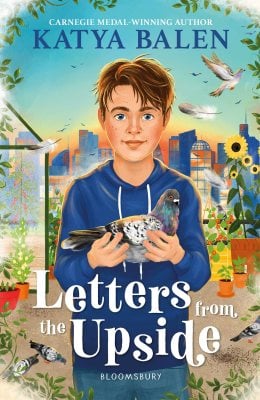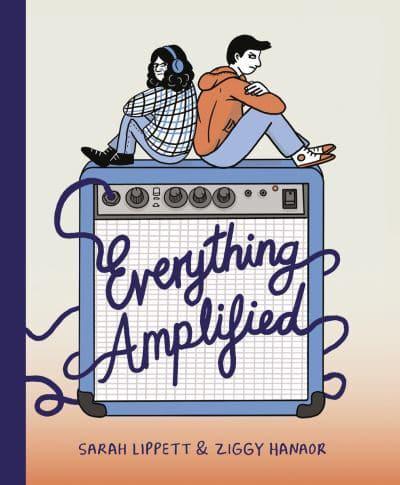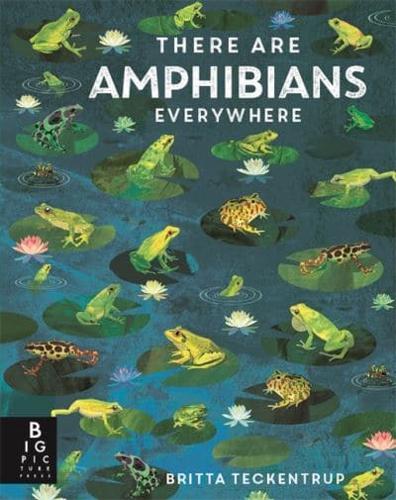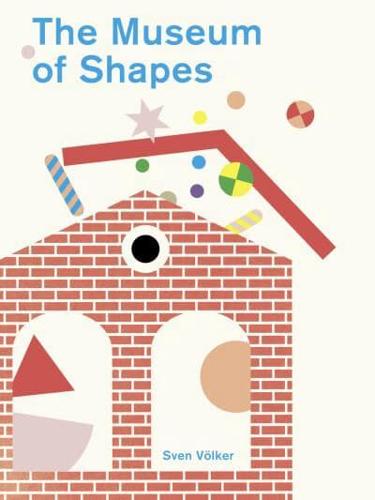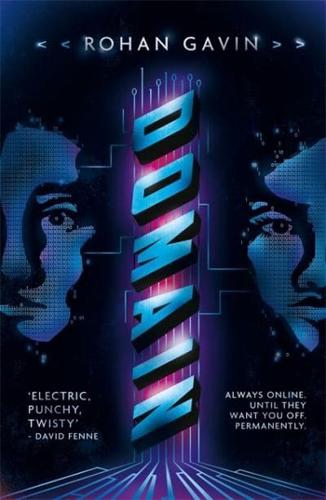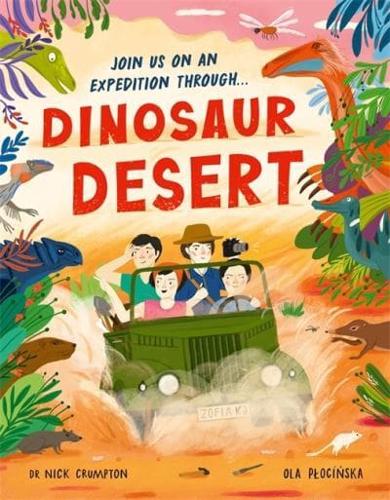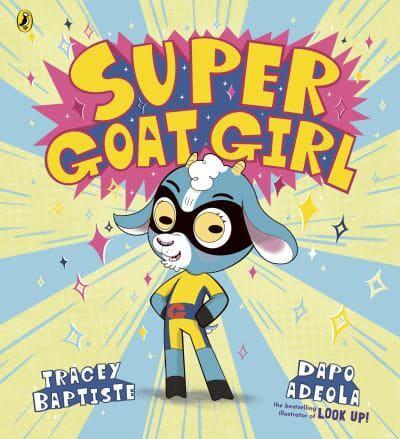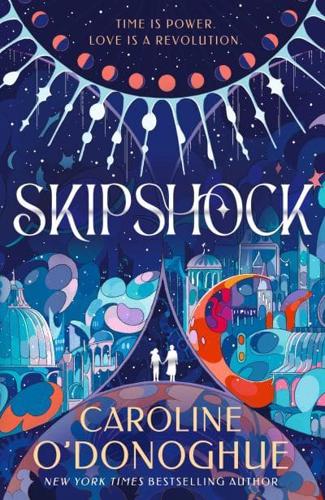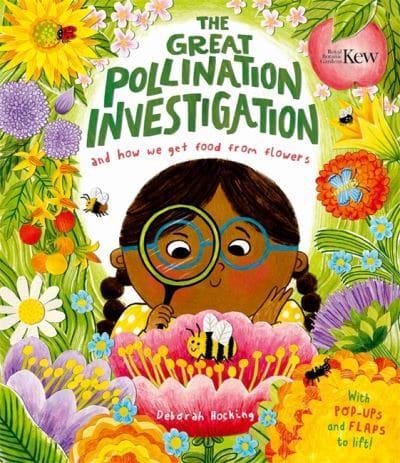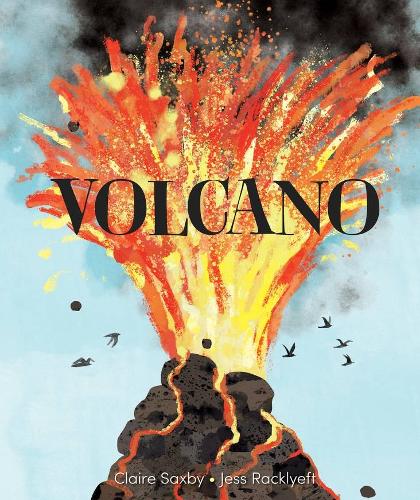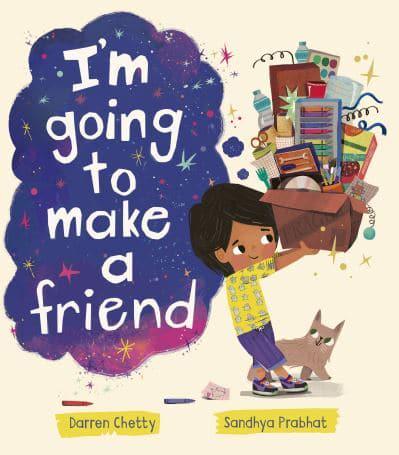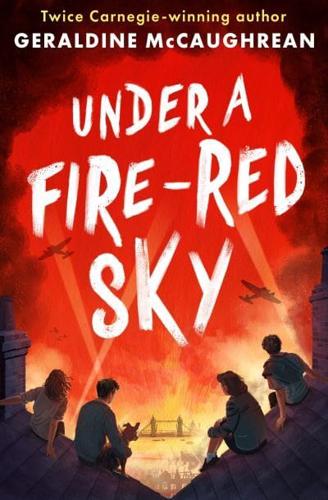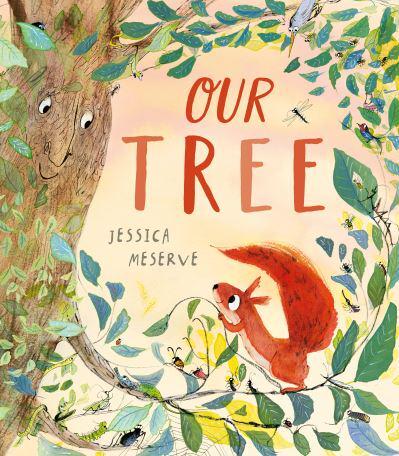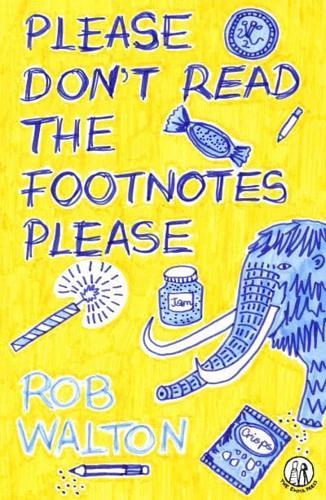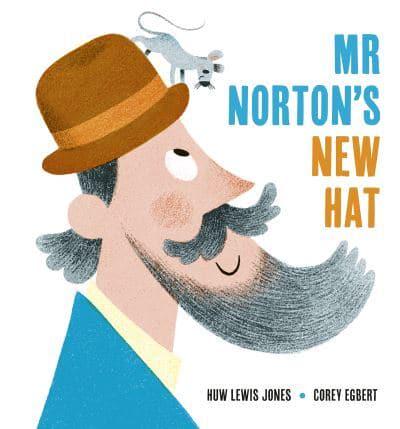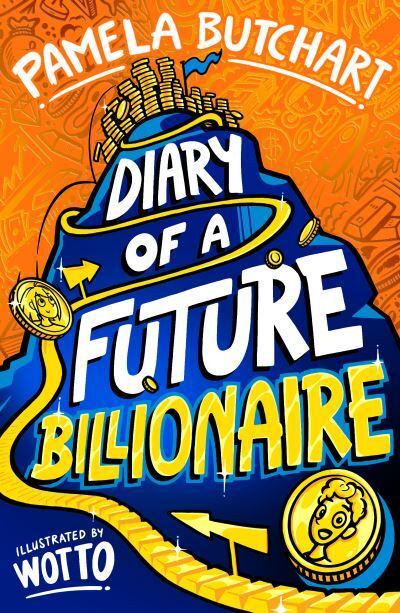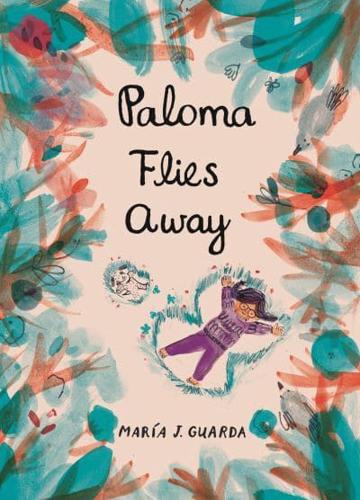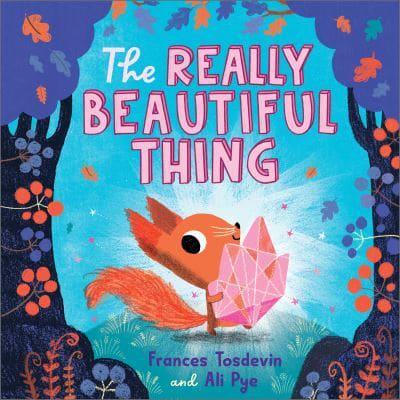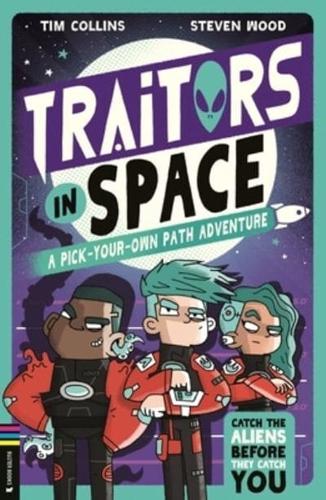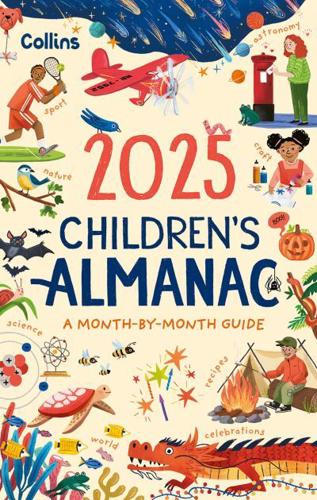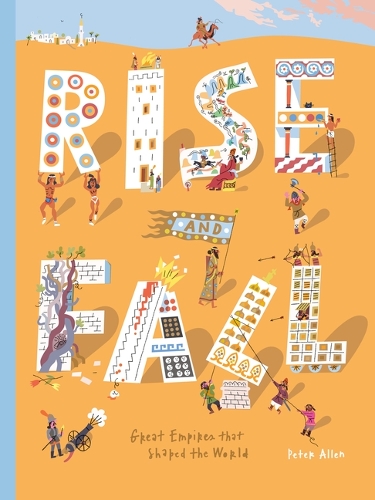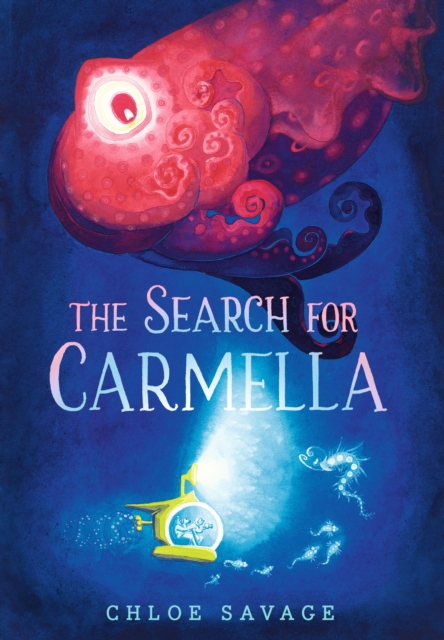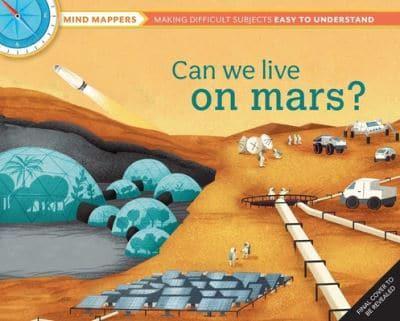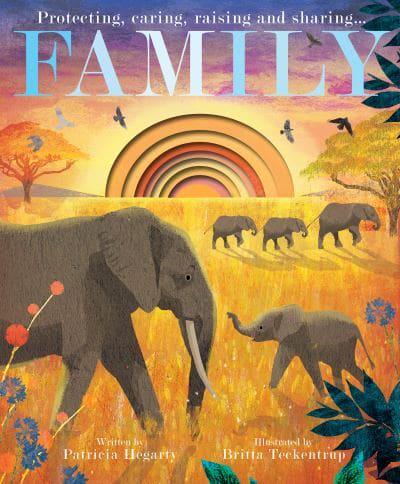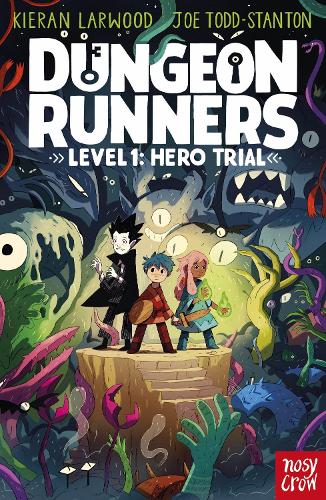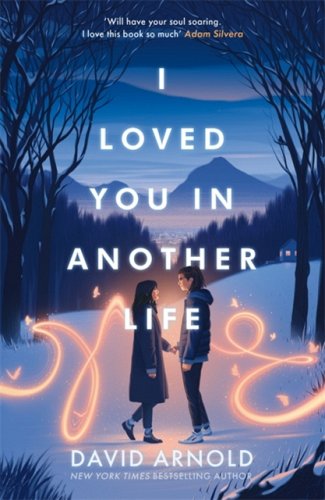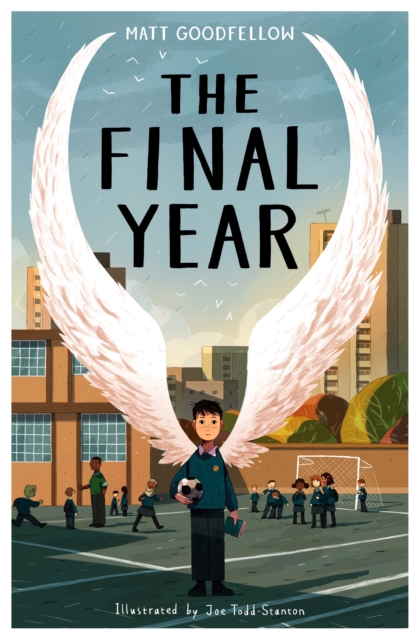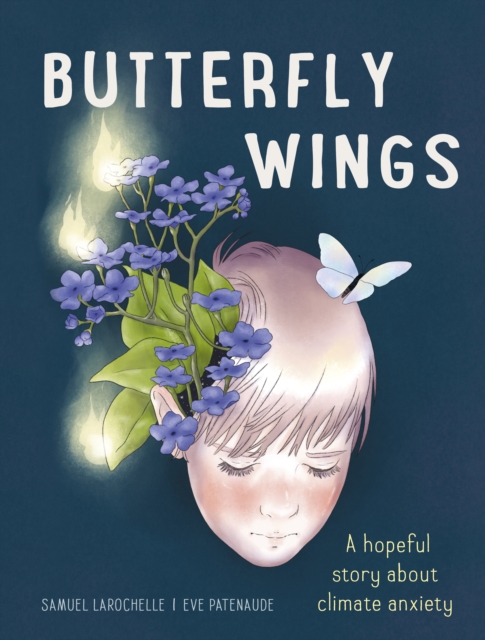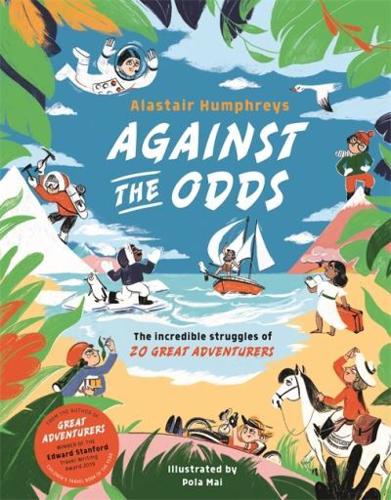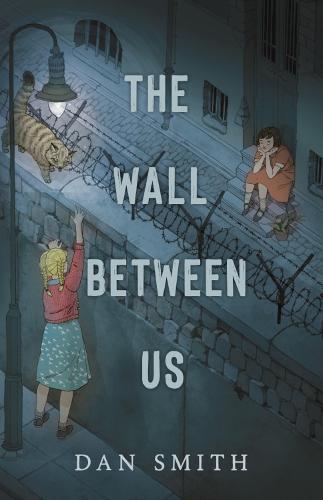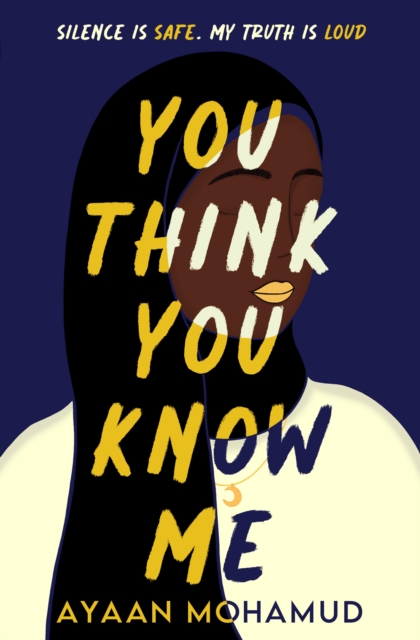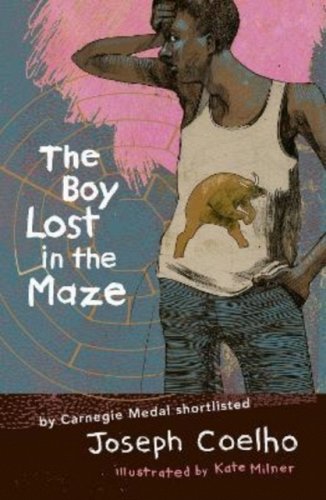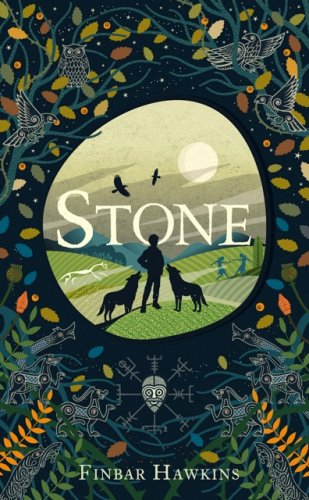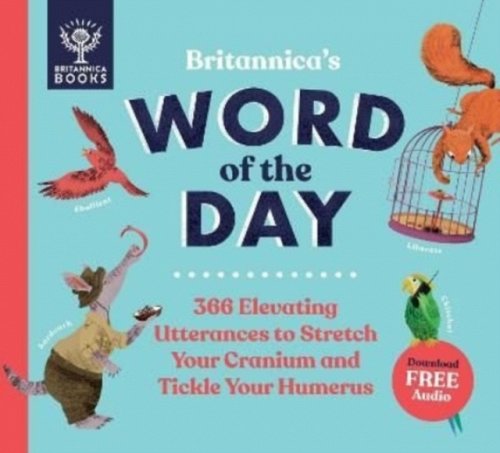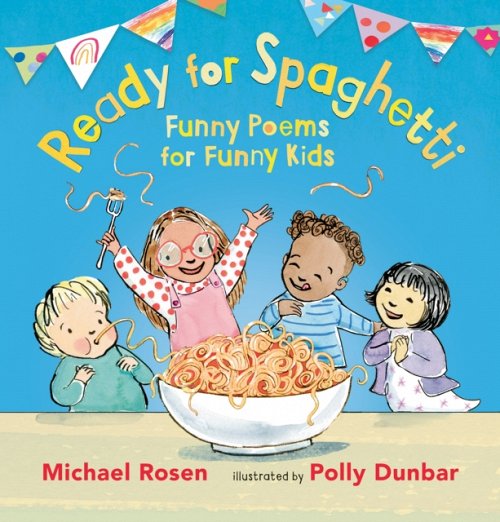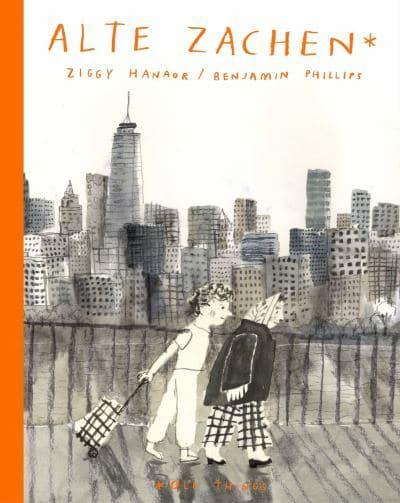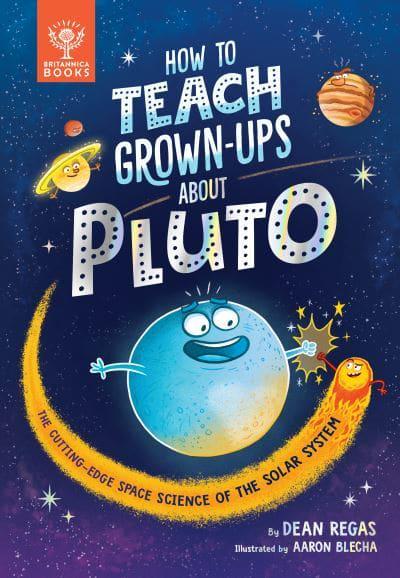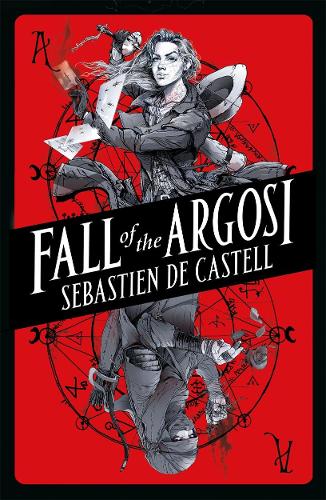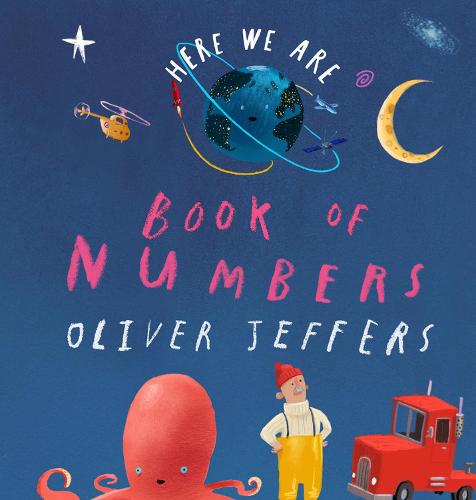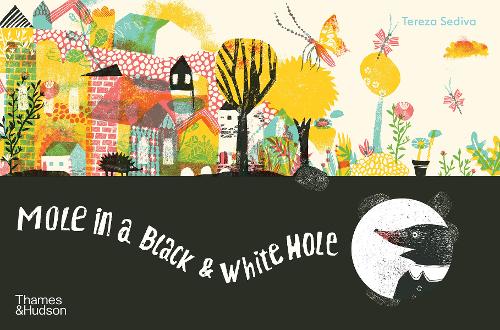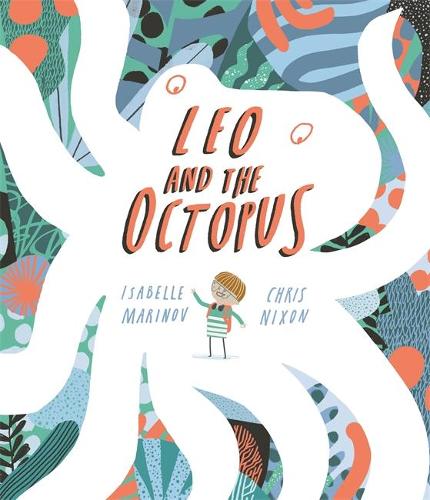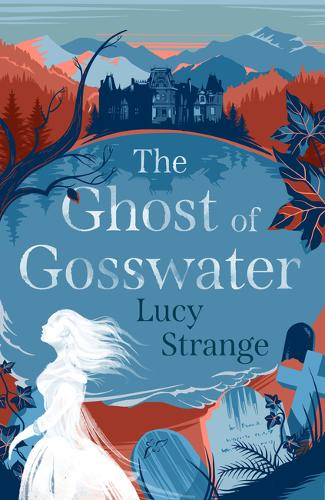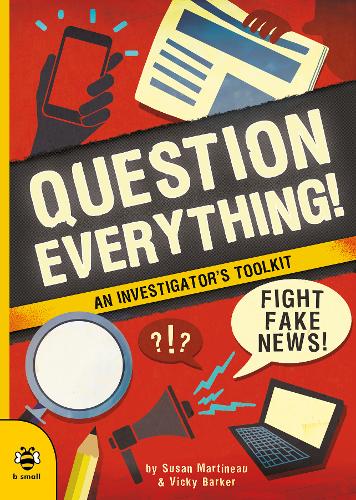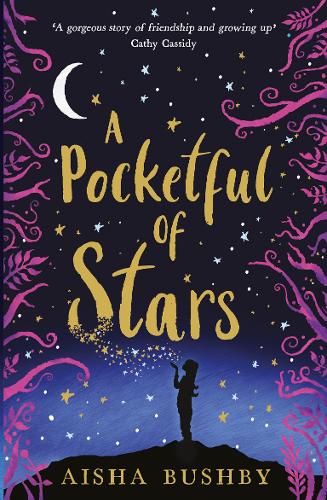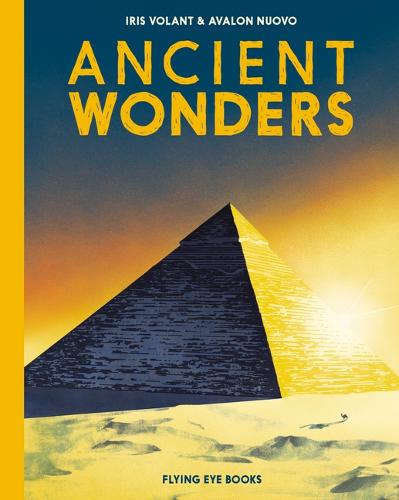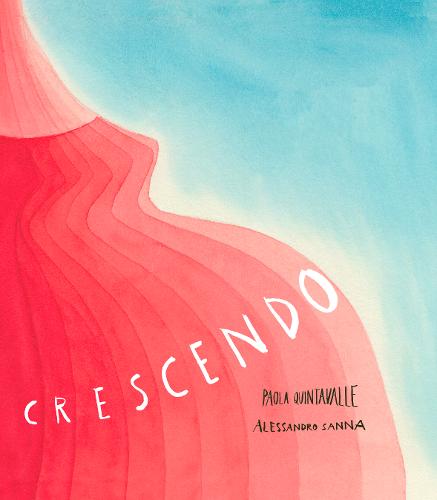Children’s and YA books of the month – these picks by the School Reading List team are compiled monthly and highlight new releases and editions of picture books, fiction and non-fiction books suitable for children and young adults. For even more suggestions, see our daily new book recommendations on our X Feed and our Facebook page.
December 2025
Fiction book of the month
Snow by Meera Trehan
After a wish goes wrong, an imprisoned princess finds her kingdom buried in snow and her people lost. She spends her days digging for answers until Ela, a mysterious girl from our world, suddenly appears. Together they race to set things right before the ice takes over for good. Mixing magic, mystery, and science, the story explores friendship, courage, and what it means to make amends. Snow is highly recommended and would make a great Christmas book gift for 9+ year olds, or an atmospheric class reader for the run-up to Christmas.
Non fiction book of the month
What If… Every Volcano Erupted at Once? by Emma Young
Emma Young tackles 33 quirky questions about our planet, breaking down big ideas with facts, photos, diagrams, and clear explanations. Readers jump between topics like volcanoes, climate, geology, and ecology, all framed through imaginative prompts such as what would happen if every volcano erupted at once. The question-and-answer format makes it easy to dip into, and each page leaves children with a memorable glimpse of how Earth works and why its strangest possibilities matter. It’s a fascinating illustrated non-fiction text for KS2 and primary school libraries.
Picture book of the month
Hot Food Nice! by Michael Rosen, illustrated by Neal Layton
A family sits down to eat, and Michael’s dad bites into a potato that is far hotter than he expects. What follows is the familiar fun and read-aloud chaos of Michael Rosen’s much-loved poem, brought to life with Neal Layton’s lively illustrations. This memorable picture book leans into the repetition and rhythm that make the original such a thrill to read with 3–7-year-olds, turning an everyday mealtime into a memorable moment. It’s ideal to read to EYFS classes.
November 2025
Fiction book of the month
Wild Journey by A. M. Dassu, illustrated by Joe Lillington
Wild Journey gathers accessible and beautifully written short adventure stories for 7+ year olds, following five children in Egypt, Morocco, Spain, and France. Their lives are linked by the great migrations of starlings, whose sweeping murmurations echo through each tale. A runaway, a daring rescue, and a perilous desert crossing bring moments of risk and discovery, showing how the children change as the birds move on. Bold black and orange illustrations appear throughout this sparkling collection, perfect for reading aloud and for KS2 classroom libraries. Read our full review.
Non fiction book of the month
Flush It Down by Rob Flowers
Ever wondered where it all goes after you flush? Flush It Down takes you on a lively trip through the messy, marvellous history of human waste. From ancient Rome’s Cloaca Maxima to Victorian London’s sewer revolution, it’s full of weird facts, odd inventions, and more than a few whiffy surprises. Rob Flowers’ bold, funny illustrations bring every rattling pipe and dark puddle to life. Flush It Down is a smart, stinky mix of history and science that KS2 readers will absolutely love.
Picture book of the month
Mullets by Nick Sharratt
This laugh-out-loud picture book whisks readers off to Mullet Isle, where every person, pet, and even vehicle proudly sports the same short-at-the-front, long-at-the-back haircut. Packed with rhymes, cheeky diagrams, and a funny twist at the end, it invites children to spot mullets everywhere they look. The bold, bright artwork and easy text make it perfect for young readers, while Nick Sharratt’s trademark style turns a classic haircut into a vibrant, fun-packed celebration. Hair-ly recommended.
October 2025
Fiction book of the month
Letters from the Upside by Katya Balen
Con is a boy wrestling with anger after his father walks out. Suspended from school and drifting from his best friend, he strikes up an unlikely friendship with Mr Williams, the neighbour who keeps homing pigeons on the roof. Looking after the birds gives Con a sense of purpose and a glimpse of hope in this affecting read for 9+ year olds. When Mr Williams leaves, Con takes full responsibility and begins to wonder if the pigeons might somehow help him reach his father. A highly convincing, moving, and ultimately uplifting contemporary story about friendship and family, Letters from the Upside is perfect for class reading and discussion in KS2. Highly recommended.
Non fiction book of the month
All About Antarctica by Marc Martin
This stunningly illustrated guide whisks 7+ year olds off to Antarctica, the planet’s coldest and windiest corner. It reveals what life is really like at research stations, from how people work and eat to the wildlife just outside the door. Each highly illustrated double-paged spread drops in quirky facts, whether it’s penguins, volcanoes, or even pizza deliveries. There’s room for climate science, waste management, and the odd music festival, too. Styled like a field manual, it blends travel notes with everyday science. It’s an excellent gift choice hardback or showstopper non-fiction title for your KS2 library.
Picture book of the month
To Activate Space Portal Lift Here by Antoinette Portis
Open the cover and suddenly Zrk and Blrg are staring right at you, eager to check your teeth, quiz you about “Planeturth”, and call in their friends before the lights cut out. Every page feels like they are speaking straight to you, with flashing buttons and a cosmic portal that could snap shut at any second. Antoinette Portis keeps the pace playful and slightly anarchic, so bedtime or storytime turns into more of an otherworldly adventure than a quiet read! Highly recommended, this uniquely bold alien and space-themed picture book is perfect for imaginative 4+ year olds.
September 2025
Fiction book of the month
Everything Amplified by Sarah Lippett and Ziggy Hanaor
Fifteen-year-old Nel is used to fading into the background, especially with her twin brother Ludo soaking up the spotlight. But when she ends up stepping into his place in a local band, music gives her a way to push back, speak up, and figure out who she really is. With writing by Ziggy Hanaor and illustrations by Sarah Lippett, this highly relatable coming-of-age story blends sibling drama, identity and angst with genuine heart. Exploring contemporary social media, ambitions, dreams, and the importance of music as a soundtrack to life, Everything Amplified is a powerful graphic novel that teens will seek out. Every KS4 school library should stock it. Highly recommended. Read our full review.
Non fiction book of the month
The Incredible Pop-up Frog: And other Wetland Creatures by Ben Hoare, illustrated by Jasmine Floyd
This highly interactive nonfiction book explores three wetland habitats through clever pop-ups and flaps, inviting readers to peek above and below the surface. From frogs and amphibians to insects and birds, it reveals the rich biodiversity of these ecosystems. Jasmine Floyd’s illustrations bring each scene to life, pairing vivid visuals with clear chunks of facts and thought-provoking detail. It’s an immersive journey through the wetlands: part science, part spectacle, and all beautifully crafted. This is a sensational hardback that will amaze and engage 7-12 year olds for months! The ultimate gift book for nature lovers – highly recommended.
Picture book of the month
Oh Dear, Look What I Got! by Michael Rosen and Helen Oxenbury
When a boy goes to the shops, whatever he tries to buy is replaced by a living, breathing rhyme. “I went to the shop to get me a carrot. Oh dear! They gave me … a parrot.” A few mix-ups later, and he’s trailed by a hilarious menagerie of unexpected companions. When the chaos reaches its peak, the shopkeepers swap the animals for the right goods at last. This playful, repeat-and-build story for 3-7 year olds is packed with humour, vibrant artwork and perfect read-aloud moments. It’s an instant classic! Highly recommended.
August 2025
Fiction book of the month
Gloam by Jack Mackay
Thirteen-year-old Gwen moves with her family to her late grandmother’s house on Gloam Island after her mother’s death. When Esme, a new babysitter, arrives, Gwen senses something is wrong. While others are drawn to Esme, Gwen sees a darker side, and as strange events unfold and nightmares take shape, she must confront her fears to protect her family. This unusually gripping story weaves suspense with supernatural elements, exploring themes of grief, trust, and resilience in the face of the unknown. Highly recommended for UKS2 and KS3. Read our full review.
Non fiction book of the month
There Are Amphibians Everywhere by Britta Teckentrup and Camilla De La Bedoyere
This stunningly illustrated nonfiction book introduces 7+ year olds to the fascinating world of amphibians: from frogs and toads to newts, salamanders, and the lesser-known caecilians. It explores how these creatures live between land and water, how they move, eat, grow, and where they’re found across the globe. There’s a fun search-and-find feature woven through each engrossing double-page spread. Part of a series exploring animals in their natural habitats, this gorgeous hardback is highly recommended for KS2 libraries.
Picture book of the month
The Museum of Shapes by Sven Volker
Alma is the guide at the Museum of Shapes, where young readers explore triangles, circles, hexagons, and more. With clear explanations, playful questions, and interactive tasks, the book invites children to notice shapes in the world around them, and even use their bodies to explore geometry. Designed with a clean, modern style, it turns early maths into a grand tour. It’s smart, inviting and perfect to read and discuss with inquisitive 3-6 year olds.
July 2025
Fiction book of the month
Domain by Rohan Gavin
Imagine being permanently online! Porter Simms is an orphan chosen to test a device that beams new skills straight into his brain. But when he becomes permanently hooked up to the system, things get complicated and each upgrade messes with his mind a little more. As Porter tries to uncover a looming threat from someone or something that wants to permanently shut him down, he’s forced to balance the dangers of staying online. It’s a relentless, fast-paced and shorter read – perfect for 11+ year olds who are fascinated by high stakes tech adventure, apps and smartphones. Highly recommened for KS3, the clever binary cover art graphic exudes library shelf appeal.
Non fiction book of the month
Dinosaur Desert: A Prehistoric Journey of Discovery by Dr Nick Crumpton and Ola Plocinska
Trailblazing palaeontologist, Zofia Kielan-Jaworowska was best known for unearthing fossils in the Gobi Desert. The hardback explores her childhood in Nazi-occupied Poland, her determination to study in secret, and the expeditions that led to finds like Deinocheirus and Velociraptor. With plenty of vibrant and detailed illustrations, fossil facts, and thought-provoking narrative moments from her adventures, it’s a fascinating glimpse into Zofia’s remarkable life and her contributions to prehistoric knowledge. Highly recommended for 7-9 year olds.
Picture book of the month
Super Goat Girl by Tracey Baptiste, illustrated by Dapo Adeola
Super Goat Girl arrives at superhero school, only to find her classmates aren’t sure what to think of her rather unusual talents. But when chaos erupts, from alien ropes to a gorilla on the loose, she jumps in to save the day, proving her worth in unexpected ways. Little by little, her classmates see that every superpower counts. Tracey Baptiste pens the story, with bright and lively illustrations from award-winning Dapo Adeola. Exploring themes of shyness, teamwork and resilience, Super Goat Girl is highly recommended. It’s a great book to discuss with EYFS children.
June 2025
Fiction book of the month
Skipshock by Caroline O’Donoghue
Skipshock by Caroline O’Donoghue is a wild ride into a world where time moves at different speeds, depending on where you are. Margo, the teen protagonist, jumps between dimensions where power is tied to time. Some places have fast days, others slow, and the divide’s more than just a quirky detail – it’s a matter of privilege. As Margo uncovers secrets of time travel and politics, the story sets up a whole new fantasy universe. Highly recommended for KS4.
Non fiction book of the month
The Great Pollination Investigation: and How We Get Food from Flowers by Deborah Hocking
This spectacular lift-the-flap filled nonfiction book gives 5-7 year olds a closer look at how flowers grow food, from pollination to fruit. It explains the parts of a flower, introduces the animals that help things along, and includes a simple interactive experiment to try at home. Developed with input from Kew Gardens, it balances clear explanations with fun hands-on learning and curiosity. Children in KS1 will love this book! Highly recommended.
Picture book of the month
Snarky Sharky by Bethan Clarke, illustrated by Nikolas Ilic
A magnificently sarcastic shark with funky eyebrows gets fed up with his reef-mates and sets off to find a new home – one that appreciates just how fabulous he is. Narrated in his own super-confident voice and packed with ocean puns to appeal to parents, this picture book for 3-6-year-olds delivers big laughs as Shark meets a series of other ocean creatures. Bright, cartoon-style illustrations match the energy of the text, while the story gently nudges readers to think about pride, community, and the value of not taking yourself too seriously. It’s an absolute winner as a bedtime story or EYFS read-aloud. Highly recommended! Read our full review.
May 2025
Fiction book of the month
A Flash of Neon by Sophie Cameron
Laurie lives above her mums’ bookshop, happily tucked away in a Scottish town, scribbling stories in her notebook. But when Neon – a boy she made up – shows up in real life, things get weird fast. As more pieces of her imagination start slipping into the real world, Laurie’s left to figure out what’s going on, and what it all means for her.For 10-14 year olds, it’s a compelling, original and thoughtful mix of reality, fantasy and the magic of making stuff up. Highly recommended for KS3.
Non fiction book of the month
Volcano by Claire Saxby and Jess Racklyeft
Claire Saxby and Jess Racklyeft bring the birth of an underwater volcano to life, from the first seabed tremor to the rise of a brand-new island. With lyrical text and dreamy illustrations, the book follows bubbling lava, towering chimneys, and the slow return of sea life. A fold-out page captures the dramatic moment the volcano breaks the surface, while the back pages introduce KS1 and KS2 readers to chemosynthesis. It’s a fascinating large format illustrated book for 5-8 year olds. Highly recommended.
Picture book of the month
I’m going to make a friend by Darren Chetty and Sandhya Prabhat
Starting a new school can feel huge – especially when you’re wondering what it takes to make a friend. This gentle, thoughtful and geuninely useful story for 3-6 year olds follows one child’s hopes, worries, and quiet questions about sharing, boundaries, and what it means to connect. As they build a cardboard companion, their imagination and emotions unfold in parallel, offering a subtle take on identity, play, and early friendship. It’s a lovely, understated reflection on change and finding your people – whoever they may be. Highly recommended for EYFS and KS1.
April 2025
Fiction book of the month
Under a Fire-Red Sky by Geraldine McCaughrean
As bombs rain down on London, four young evacuees decide to stay behind, bound by friendship and circumstance. Laurence tinkers with a secret invention, Gemmy adopts a stray, Franklin dreams of firefighting, and Olive holds her fractured family together. Through blackouts and burning streets, they face the war in their own way. Inspired by her firefighter father, Geraldine McCaughrean delivers a gripping tale of courage, survival, and the unexpected strength found in friendship. It’s a stunningly woven tale of resilience. Highly recommended.
Non fiction book of the month
We are All Animals by Ben Hoare and Christopher Lloyd, illustrated by Mark Ruffle
Ben Hoare and Christopher Lloyd’s We Are All Animals takes a fascinating look at what humans have in common with the rest of the animal kingdom. Packed with lively illustrations by Mark Ruffle, it uncovers surprising links – like how dolphins have names, rats enjoy belly rubs, and we share 75% of our genes with chickens. Blending fun facts, science, and eye-catching visuals, this book sparks curiosity, reminding kids that we’re all part of one big, interconnected world. It’s the perfect blend of fascinating facts and cool graphics for primary school libraries and KS2 classrooms.
Picture book of the month
Our Tree by Jessica Meserve
Little Red, a feisty little squirrel, thinks he’s found the perfect tree – his tree. But he’s not the only one who loves it. Birds perch, insects munch, and bigger animals take shelter, much to his annoyance. Determined to claim his own space, he sets off, only to run into a leopard with a lesson to share. Maybe trees aren’t meant for just one creature after all. Our Tree is a beauutifully realised, warm and thoughtful tale about community and cooperation. Highly recommended.
March 2025
Fiction book of the month
Please Don’t Read the Footnotes Please by Rob Walton, illustrated by Reena Makwana
Rob Walton’s middle-grade book is a wild ride through quirky stories and hilarious footnotes packed with his own cheeky asides. From horses to time capsules, the tales are filled with oddball moments that will have young readers giggling and thinking outside the box. With its playful, interactive style, this book encourages children to get creative, embrace humour, and have fun while reading. Highly recommended for children in UKS2 and KS3 who want to fall in love with reading again.
Non fiction book of the month
Into the Ice: Reflections on Antarctica by Alison Lester and Coral Tulloch
This beautifully illustrated book offers a glimpse into Antarctica through the eyes of Alison Lester and Coral Tulloch. Blending sketches, paintings, journal entries, and historical snippets, it brings the ice-covered continent to life – its landscapes, wildlife, and the sheer challenge of living there. With reflections from past and present explorers, it’s both a travelogue and a deep dive into history and climate change. It’s a fascinating read for children and adults alike.
Picture book of the month
Mr Norton’s New Hat by Huw Lewis Jones and Corey Egbert
Horace Norton doesn’t mind when a little mouse moves into his hat – what’s one tiny guest? But soon, birds nest in his pockets, squirrels stash acorns in his boots, and cats curl up in his chair. The growing menagerie turns his life upside down until, in a moment of frustration, he shoos them all away. But the sudden quiet feels… wrong. With playful repetition and a warm heart, this story gently explores kindness, patience, and the unexpected joys of company. Highly recommended for EYFS, Mr Norton’s New Hat is a picture book children will want to read again and again.
February 2025
Fiction book of the month
Diary Of A Future Billionaire by Pamela Butchart, illustrated by Wotto
Ten-year-old Max has his sights set on becoming the world’s youngest billionaire – and he’s got a plan. Told through Max’s hilarious diary entries, this fun-filled middle-grade tale follows his wild attempts to make his dream a reality. Written by bestselling author Pamela Butchart, it’s an entertaining mix of humour, positivity, and big dreams, perfect for young readers who love a good laugh, imagination and a dash of ambition. KS2 readers will love it.
Non fiction book of the month
Surviving Vesuvius by Christopher Harrisson, illustrated by Beth Waters
Surviving Vesuvius brings the eruption of Mount Vesuvius to life through the eyes of Pliny the Younger. Inspired by his real letters, it offers a compelling glimpse into daily life in Pompeii before everything turned to ash. Featuring historical figures like Julia Felix and Julius Polybius, the book blends history, science, and geography with vivid illustrations, a timeline, and a glossary. It’s perfect for 7–11 year olds. Highly recommended.
Picture book of the month
Paloma Flies Away by María J. Guarda
This powerful and moving picture book follows a young girl and her parents as they escape a country under dictatorship, leaving everything behind. As they build a new life, Paloma’s memories of home start to blur – though her parents never stop longing for what they lost. When they finally return, she faces the challenge of rediscovering a place that no longer feels familiar. A poignant, beautifully illustrated story about migration, belonging, and what it really means to call somewhere home, Paloma Flies Away is highly recommend for primary school libraries.
January 2025
Fiction book of the month
Loverboy by Ben Tomlinson
In Loverboy, Alfie tackles the messy world of teenage romance. When his crush, Maya, starts dating someone else, Alfie turns to her quiet best friend, Gwen, but soon finds himself falling for her too. As his feelings get all tangled up, he makes a big mistake. This funny and relatable teen romance captures the chaos of love, friendship, and figuring out who’s right for you, all with plenty of heart and humour.
Non fiction book of the month
One Day: A True Story of Courage and Survival in the Holocaust by Michael Rosen and Benjamin Phillips
In One Day, Michael Rosen shares the remarkable true story of Eugène Handschuh and his father, who escaped a Nazi convoy bound for Auschwitz during WWII. After several failed attempts, they find freedom with help from the French Resistance. Illustrated by Benjamin Phillips, this exceptional large-format picture book highlights courage, compassion, and resilience. Aimed at upper primary-aged children, it offers a sensitive introduction to Holocaust history, with Rosen providing valuable historical context for deeper understanding and discussion. Highly recommended.
Picture book of the month
The Really Beautiful Thing by Frances Tosdevin
Squirrel gives up everything – his belongings, home, even friendships – for something he’s desperate to have but doesn’t truly understand. When the prize turns out to be worthless, he’s left to reckon with the price he’s paid. This picture book gently explores themes of consumerism and the importance of relationships, wrapping it all up in a relatable, thought-provoking tale. It’s perfect for sharing with EYFS and KS1 children to spark conversations about what really matters in life.
December 2024
Fiction book of the month
Traitors in Space: A Pick-Your-Own-Path Adventure by Tim Collins
Traitors in Space by Tim Collins throws readers straight into the action as a young scientist on a mission gone awry. Woken from cryosleep, you must figure out who’s human and who’s under alien control. Packed with branching storylines—over 45 endings!—and puzzles that keep you guessing, this interactive sci-fi adventure is perfect for kids aged 9+. Add in gripping illustrations and you’ve got a thrilling mix of mystery, action, and problem-solving that’s hard to put down.
Non fiction book of the month
2025 Children’s Almanac by Collins Kids
The 2025 Children’s Almanac by Collins Kids is a month-by-month treasure trove for curious kids. Packed with calendars of special days, seasonal nature tips, stargazing guides, and tales of global traditions, it’s full of fun and learning. There are crafts, recipes, and puzzles to try, plus fascinating tidbits on the environment and culture. With its sturdy design and easy-to-read format, it’s perfect for young readers—or a cosy family browse together. A year of discovery in one book!
Picture book of the month
A Symphony of Stories by James Mayhew
A Symphony of Stories by James Mayhew introduces six classical orchestral works through stories and illustrations. The book explores Carnival of the Animals, The Four Seasons, The Firebird, and others, linking music with narrative to engage children. Mayhew’s lyrical storytelling and spectacular illustrations create a rich experience, with added notes and suggested recordings for further learning. Highly recommended.
November 2024
Fiction book of the month
When It’s Your Turn for Midnight by Blessing Musariri
When It’s Your Turn for Midnight follows Chiante, a young girl in Zimbabwe who discovers her father is not who she thought, prompting her to seek refuge with her grandmother. In Mutare, she finds a sisterhood of women who have survived war and trauma, running a successful fashion-upcycling business. Inspired by true stories, this empowering and modern YA novel addresses themes of family, resilience, and intergenerational trauma with sparkling prose and unforgettable characters. Highly recommended. Read our full review.
Non fiction book of the month
Rise and Fall by Peter Allen
Dive deep into nine ancient civilisations, including the Vikings, Aztecs, Mali, and lesser-known societies like Ayutthaya and Kamakura. Through stories of powerful leaders, monumental battles, and enduring legacies, Rise and Fall explores each empire’s rise, peak, and eventual decline. With engaging and highly visual insights into ancient life, this accessible and well-written text is ideal for primary school libraries.
Picture book of the month
The Search For Carmella by Chloe Savage
Dr Rose, a marine biologist, embarks on a spectacular mission to find Carmella, a legendary sea creature. With her team, she explores the deep ocean in a submersible, encountering extraordinary marine life in a nearly pitch-black world. This story combines themes of scientific curiosity and exploration with incredible illustrations. It’s perfect for primary-aged readers interested in marine biology and the mysteries of the deep ocean. Highly recommended.
October 2024
Fiction book of the month
The Snowman Code by Simon Stephenson
The Snowman Code tells the story of a friendship between 10-year-old Blessing and Albert Framlington, a 600-year-old snowman. Set in a perpetually wintry London, they tackle bullies, recover Albert’s lost love, and confront the endless winter. Aimed at 7+ year olds, this heartwarming festive tale addresses themes of anti-bullying, mental health, climate change, and the power of friendship. It’s perfect for family reading during frosty nights and for reading to KS2 classes as the afternoons darken in the run-up to Christmas. A potential classic in the making, The Snowman Code is highly recommended. Read our full review.
Non fiction book of the month
Can We Live on Mars? by Giles Sparrow
Can We Live on Mars explores the challenges and possibilities of human life on Mars. It looks at problems posed by distance, landing techniques and survival as well as exploring solutions to living in a thin atmosphere with extreme weather conditions. The mind-mapping approach simplifies complex scientific concepts, making the information highly accessible and interesting for 8-11 year olds. Enhanced with vibrant illustrations, this thoroughly engaging book deftly combines visual storytelling with concise factual content. Highly recommended.
Picture book of the month
Family by Patricia Hegarty, illustrated by Britta Teckentrup
Through lyrical rhymes and gorgeous artwork, Family explores how species from dolphins to elephants care for and support each other. Each die-cut page opens a portal to different landscapes. It’s the perfect book to read, share and explore with younger children and a great text to return to and read again with older children. Part of the acclaimed Peek-through Nature series, it celebrates the joy of life. This beautiful, enchanting and inspiring picture book is highly recommended.
September 2024
Fiction book of the month
The Boy in the Suit by James Fox
The Boy in the Suit follows ten-year-old Solo as he navigates poverty, his mother’s mental health, and social stigma. A touching middle-grade novel, it addresses empathy, kindness, and community support. Solo’s journey, from funeral crashes to a heart-wrenching search for his mother, culminates in a hopeful new beginning with his father. This poignant and convincing story of resilience and love is perfect for 9-11-year-olds in UKS2. Highly recommended. Read our full review.
Non fiction book of the month
First Big Book of How by Sally Symes
First Big Book of How by Sally Symes is a comprehensive, illustrated guide for children aged 5+, answering fundamental questions about the world. Covering topics from space to the human body, it supports STEAM learning by encouraging curiosity and exploration. This whopping 256 page hardback is ideal for children who love to think deeply about how the world works, and with detailed illustrations and diagrams throughout, would make a centrepiece KS1 library resource or inspirational gift. Highly recommended.
Picture book of the month
Serena and Laloolee Fly Away by Rosemary Clunie
Dreaming of flight, Serena creates enchanted wings with a blue stone, allowing her to soar upwards. Soon she meets Laloolee in a magical realm, learns to control her flight, and finds her way home. Perfect for reading with 4-8 year olds, this marvellously imaginative and deeply satisfying modern fairy tale combines a charming narrative with spectacularly colourful collage and screen print illustrations. It’s ideal for sparking creative writing ideas in KS1 and enthralling younger children at bedtime.
August 2024
Fiction book of the month
Sisters of the Moon by Marie-Louise Fitzpatrick
Sisters of the Moon explores themes of grief, friendship, and mystery through the story of Suzy Button, a young girl grappling with loss. Set against an Irish seaside backdrop, the narrative introduces Rhiannon, an enigmatic newcomer who transforms Suzy’s life with newfound friendships and moonlit adventures. This YA novel, with its mystical elements and relatable characters, appeals to readers navigating personal challenges and exploring themes of friendship and self-discovery. Ideal for readers aged 12+, Sisters of the Moon offers a poignant exploration of grief and the transformative power of companionship in a vividly depicted setting.
Non fiction book of the month
Beautiful: A Celebration of Evolution by William Spring
Beautiful: A Celebration of Evolution explores animal evolution, illustrating how unique traits can determine survival. Featuring spectacular watercolor portraits of 50 creatures, from the American bison to the vampire squid, this eye-catching large format book emphasizes the inherent perfection in all of nature’s designs. Ideal for children aged 9-11 and for family reading, it offers an informative and positive perspective on biodiversity and adaptation.
Picture book of the month
Gina Kaminski Rescues the Giant by Craig Barr-Green, illustrated by Francis Martin
Confident, autistic protagonist, Gina Kaminski, comes up with a plan that involves no magic beans but plenty of cake, correcting the original plot in this distinctive modern version of the Jack and the Beanstalk story. This book will empower children to take control of their own narratives and appeal to fans of fractured fairy tales and character-driven stories. Great to read with children in KS1, Gina Kaminski Rescues the Giant would also make an interesting modern fairy tale to study and model for writing in LKS2. Highly recommended.
July 2024
Fiction book of the month
The Virtue Season by L.M. Nathan
Friends to lovers, forced proximity and forbidden romance swirl together in this sharply written dystopian world where choice, freedom and women’s rights are curtailed. 18-year-old Manon Pawlak is set for a genetic matching process called The Virtue Season. But her best friend Agatha, marked by a scar due to seizures, faces ‘decommissioning’. The startling novel uniquely blends dystopian narratives with romance and social commentary. Your KS4 book clubs won’t run out of discussion points after reading The Virtue Season. Read our full review.
Non fiction book of the month
Lifesize Ocean Animals by Sophy Henn
3-6 year olds will love this stunning interactive book that features real-size illustrations of ocean creatures. Compare yourself to turtles, megalodon teeth, anglerfish, and a giant spider crab using the spectacular illustrated fold-out pages. This large format book is ideal for young learners fascinated by marine life and the natural world. Highly recommended.
Picture book of the month
Move, Mr Mountain! by Francesca Sanna
When Lily decides to explore the other side of the mountain, she asks the mountain to move. But Mr Mountain, who can’t move, thinks this unreasonable and loses his temper! Can Lilly and Mr Mountain work out their differences? There’s a satisfying happing ending to this atmospheric and thought-provoking picture book for 5-7-year-olds. Move, Mr Mountain! will be a useful tool for KS1 teachers to help children discuss empathy and consider different points of view. Read our full review.
June 2024
Fiction book of the month
Dungeon Runners: Hero Trial by Kieran Larwood and Joe Todd-Stanton
Intrepid 7+-year-olds will relish this exhilarating journey into the world of Dungeon Runners with Kit, a determined part gnome, part dwarf – ‘gnorf’ with big dreams and a big heart. With his friends Sandy and Thorn, Kit navigates mazes, puzzles, and monsters in the compelling Dungeon Running League. Larwood’s fun-filled storytelling, paired with Todd-Stanton’s vibrant illustrations, brings this action-packed friendship-themed adventure to life. It’s an irresistible read for children in KS2. Highly recommended. Read our full review.
Non fiction book of the month
Galápagos Islands by Karen Romano Young, illustrated by Amy Grimes
Explore the wonders of the Galápagos Islands in this stunning hardback illustrated nonfiction book by Karen Romano Young and Amy Grimes. Home to unique wildlife and active volcanoes, this pristine archipelago is brought to life through Young’s firsthand observations and interviews with locals and scientists. 10+-year-old readers will learn about the delicate balance between humans and nature and the importance of conservation efforts. With biographical detail, 1st person and 3rd person nonfiction narratives, ecological explanation texts and persuasive arguments, Galápagos Islands from What on Earth Books is an ideal nonfiction text for Year 6 literacy lessons. Highly recommended.
Picture book of the month
You Got This! by Rachael Davis and Leire Martín
You Got This! by Rachael Davis, illustrated by Leire Martín, is an exuberant picture book for 3-6-year-olds that will encourage self-esteem, empathy, positive thinking and resilience. Featuring the Cheer Squad’s uplifting rhymes, it will encourage children to become their own biggest cheerleaders. The interactive elements include flaps and pull-out pages. We think this will be a popular title in EYFS and KS1 classrooms.
May 2024
Fiction book of the month
Beti and the Little Round House by Atinuke
This exquisitely presented hardback collection of diverse short stories celebrates friendship, the wonders of the seasons and the power of nature. Through Beti’s escapades with her family and friends, including her goat Naughty, young readers will be enchanted by the masterful storytelling and delightful illustrations. Beti and the Little Round House is the perfect gift book for children who are interested in the countryside.
Non fiction book of the month
The Teenage Guide to Digital Wellbeing by Tanya Goodin
Tackling the balance between online and offline life, this guide offers teens practical advice to navigate digital challenges while keeping safe and developing sensible social media habits. With interactive activities, logbook pages, quizzes and step-by-step guides, it will empower secondary-aged students to set realistic goals, manage their screen time, and concentrate on positive relationships, promoting resilience and self-confidence. It’s highly recommended for teenagers who want to reflect on their digital experiences and develop a long-term positive mindset.
Picture book of the month
Old Oak and the Wild Flowers by Elena Mannion and Erin Brown
When the hot summer changes the landscape, Old Oak and Mr Shield worry for the future. Deep down in Old Oak’s trunk, the insects have an important decision to make. Will the Barley Field return to normal by next summer? This enchanting and lyrical hardback story shows 5-11 year olds how important nature and wildlife are to the countryside ecosystem. A work of art, Old Oak and the Wild Flowers is a beautiful and memorable picture book to inspire conservation and discussion about protecting rural England.
April 2024
Fiction book of the month
Serena and the Little Blue Dog by Rosemary Clunie
In this enchanting modern fairy tale, Serena embarks on an unforgettable journey with her newfound friend, Haiku the little blue dog. As they travel through vibrant landscapes and encounter magical creatures, Serena seeks the help of the blue lady in a castle far away to solve a mystery. Rosemary Clunie’s delightful prose, paired with striking illustrations, makes this book a timeless treasure for readers of all ages. Highly recommended, Serena and the Little Blue Dog is a perfect gift book.
Non fiction book of the month
Moving Up: How to Ace Secondary School by Christian Foley
Rapping teacher Christian Foley offers invaluable guidance for students transitioning from primary to secondary school in this confidence-building and myth-busting guide. Daunting new classrooms, new friendship groups, increased academic expectations, social media and bullying are all covered in this comprehensive guide that will empower students to approach Year 7 without fear. The accessible text and clear structure will help readers develop resilience and look forward to success in their new schools. Highly recommended.
Picture book of the month
Champ by Payam Ebrahimi and Reza Dalvand
Born into a family of athletic champions, Abtin doesn’t feel as though he fits in with the other members of his family. He doesn’t want to train to become a sporting hero and instead, he wants to be artistic. Determined to find his way, he thinks he has a solution, a solution which is revealed in a clever and thought-provoking illustrative twist. Themes of individuality, self-acceptance and resilience are explored in this large format book which is ideal for reading with children aged 5-8 and discussing with KS2 classes in PSHE. Written and illustrated by the award-winning Payam Ebrahimi and Reza Dalvand, ‘Champ’ champions all those children who are at odds with the expectations of others and feel apart from their families. It’s a valuable educational tool and a stunningly memorable picture book. Highly recommended.
March 2024
Fiction book of the month
Where Sleeping Girls Lie by Faridah Àbíké-Íyímídé
In Faridah Àbíké-Íyímídé’s latest blockbuster YA mystery, Sade Hussein, a new boarding school student, uncovers dark secrets after her roommate vanishes. With a diverse cast and intricate plot, this book will appeal to teens who enjoy slow-burning, relentless and immersive thrillers. Suitable for teens aged 14+, it deftly navigates themes of trauma and trust. We think it will be the breakout hit with KS4 students this summer.
Non fiction book of the month
How to Teach Grown-Ups About Climate Change by Patricia Daniels
Empower your children to educate the adults about how our planet is changing with this eye-catching and accessible guide to climate change. With powerful facts and engaging illustrations, this book simplifies complex scientific concepts while highlighting positive action to address climate change. It’s ideal to spark important conversations and inspire action. Highly recommended for both homes and schools.
Picture book of the month
Elki is Not My Dog by Elena Arevalo Melville
This beautifully realised picture book champions the power of community spirit. When a group of children find a stray dog their act of kindness fuels this heartwarming tale that illustrates the importance of empathy and taking responsibility. With evocative illustrations, it will inspire young readers to be proactive and help others in need. The bond between Elki and the new family is beautifully depicted and will be a useful discussion point in EYFS classes. Resources.
February 2024
Fiction book of the month
A Cure Ever After by Angharad Walker
In this thrilling journey through an alternate London where emotions can make people ill, Kitt and Os race to save the city after a catastrophic incident. Ideal for KS3 readers, the narrative skillfully weaves money-soaked politics with mysterious supernatural elements. In the same universe as Once Upon a Fever, this novel forces readers to consider the consequences of feelings as well as actions in a convincing fantasy world. Highly recommended.
Non fiction book of the month
Measuring Me by Nicola Kent
‘Measuring Me’ will fascinate 3-6-year-olds with exciting measurement facts and activities. Using relatable comparisons such as ‘I weigh the same as all the toys here put together’ and ‘my eyes can see millions of miles’, the information will both inform and inspire. The lively illustrations will encourage curiosity and the pull-out height chart at the end of the book is a great interactive learning touch. Infant readers will want to measure and compare everything around them after reading this book!
Picture book of the month
The Crayons Love Our Planet by Drew Daywalt and Oliver Jeffers
The Crayons Love Our Planet continues the vibrant crayons’ adventures and celebrates our planet’s awe and wonder. Beige’s determined insistence that wheat is important adds a humourous touch, and throughout the book ecological responsibility is encouraged. The short and accessible text is ideal for younger readers and perfect to elicit discussion about Earth Day.
January 2024
Fiction book of the month
Beastlands: Race to Frostfall Mountain by Jess French
Jess French transports readers to Ramoa, an island world once teeming with wildlife and nature. This captivating tale with incredible creatures and settings follows Kayla who’s on a quest to rescue her stolen winged pangron. With friends Alethea and Rustus, she’s thrust into an epic adventure brimming with friendship and peril that will grip UKS2 readers. Beastlands blends a winning potion of magic, fantasy and fast-paced adventure. We can’t wait for the sequel. Highly recommended for 9-12 year olds.
Non fiction book of the month
How Do Meerkats Order Pizza by Brooke Barker
How does your dog know if you are smiling? Find out this and more in this fun nonfiction book that explores the lives of creatures and looks at the strange methods scientists use to try to understand them. Through vibrant comic strip graphics, the fascinating behaviours of bonobos, lizards, humpback whales and more are revealed. The book’s focus on diverse scientists also adds an inclusive touch. Highly recommended for KS2 libraries and STEM topics.
Picture book of the month
Love is in the Little Things by Stella J Jones and Jane Massey
This heartfelt and memorable story explores all the different ways we experience love – through hugs, smiles, shared moments and making-up. Despite their differences in size, the child and the bear discover common ground through play, bedtime kisses, and just being together. Each page features charming watercolour illustrations, making this the perfect bedtime story to read and share with younger children.
December 2023
Fiction book of the month
Catch Your Death by Ravena Guron
Stranded in a snowstorm, three teens find themselves i the middle of a murder plot at Bramble Estate. Are they snowed in with a killer? How much danger are they in? This taut, twisty and compelling YA thriller, narrated separately by Devi, Lizzie, and Jayne, blends classic suspense with modern gaslighting in a clue-ridden plot. 12+ readers who like puzzles from cluedo to whodunnit podcasts will love this clever murder mystery that appeals to analytical minds and features an ending no one will see coming. Highly recommended for secondary school libraries.
Non fiction book of the month
Ultrawild: An Audacious Plan for Rewilding Every City on Earth by Steve Mushin
Steve Mushin’s “Ultrawild” presents an ambitious plan to rewild every city, tackling climate change with exciting new inventions. From habitat-printing robot birds to compost cannons, Mushin explores a myriad of ideas for urban rewilding. Developed over seven years, the book deftly uses humour and clarity to explain complex STEM concepts, inspiring young minds to think for themselves about environmental challenges and imagine a greener future. The huge hardback format and highly engaging comic strip style, with masses of visual and text information packed onto every page, means Ultrawild will be a surefire hit in KS2 libraries – especially with less confident readers who enjoy learning about complex ideas. Highly recommended.
Picture book of the month
The Colour Monster: The Feelings Doctor and the Emotions Toolkit by Anna Llenas
Nuna explores difficult situations and how to look after her well-being when she asks Dr Colour Monster for advice. Using the emotions toolkit, Nuna shows younger readers how to recognise feelings, how to breathe, and how to control how she reacts. It’s a useful tool for teachers to start conversations about dealing with emotions and mindfulness. With fold-out pages, vibrant illustrations and accessible information, it’s highly recommended for EYFS and KS1.
November 2023
Fiction book of the month
Glassborn by Peter Bunzl
When the clock strikes 13, Acton, the youngest of the four Belle siblings, finds himself in fairyland and forced to work for an evil queen. Can Cora, Elle and Bram save their brother before it’s too late? The spectacularly realised fantasy quest story is brilliantly written, with convincing characters in an unforgettable world. It’s a must-read for fans of magic, daring adventure and gripping twists. Highly recommended for KS2.
Non fiction book of the month
Amazing Octopus: Creature From an Unknown World by Michael Stavaric and Michele Ganser
This cracking large format hardback dives into the fascinating world of octopuses, highlighting their intelligence and uniqueness. Blending interesting octopus facts with engaging activities, the accessible writing style and bright illustrations make it an ideal choice for KS2 upwards. With quirky facts and well-written long-form narrative nonfiction passages, this is an unusually compelling book that will leave young readers with a true appreciation for these remarkable creatures. Highly recommended.
Picture book of the month
Do You Remember? by Sydney Smith
What makes a memory? This incredible picture book explores the times, the events and the feelings a boy and his mother share. Using few words and thought-provoking pictures, this memorable and poignant story is perfect for prompting discussion about cherished moments, change, moving house, and what we hold dear. The touching narrative and dialogue, combined with exquisite illustrations really encourage empathy and reflection. It’s the perfect book to read, share and discuss with children in both KS1 and KS2.
October 2023
Fiction book of the month
I Loved You In Another Life by David Arnold
Evan Taft and Shosh Bell, both grappling with personal hardships, are drawn together by a mysterious singer’s voice in this poignant love story that transcends time and space. As their connection deepens, the novel explores themes of love, loss, and destiny. David Arnold’s lucid prose, convincing characters and unique plotting make ‘I Loved You In Another Life’ one of the best YA stories you’re likely to read this year. Perfect for KS4 book clubs.
Non fiction book of the month
Britannica’s Encyclopedia Infographica by Valentina D’Efilippo, Andrew Pettie and Conrad Quilty-Harper
Dive into a world of knowledge with “Encyclopedia Infographica,” which features 200 infographics packed with information about space, Earth, animals, humans, and technology. Complex ideas are made graspable and 10+ year old readers will gain confidence knowing that they’ve learned something new. A stunning achievement, Britannica’s Encyclopedia Infographica is highly recommended for children interested in STEM, real facts and learning how the world and universe beyond works.
Picture book of the month
The Star Whale by Nicola Davies, illustrated by Petr Horáček
The Star Whale is a visually stunning large format hardback collection of 40 poems, each beautifully paired with Petr Horáček’s vibrant illustrations. Celebrating the wonders of the natural world, from pangolins and bats to lions and a Titanosaurus, The Star Whale invites both enchanting imagination and deep contemplation. This inspirational book is a delightful read for young naturalists and a fantastic resource of nature poems for KS1 and KS2 teachers. An astoundingly beautiful book. Read our full review.
September 2023
Fiction book of the month
The Final Year by Matt Goodfellow and Joe Todd-Stanton
The end of Year 5 through to the end of primary school is told through fragments of life in this unique and powerful verse story. Nate thinks he’s ready for his final year, but that’s before his best friend since nursery drifts towards the school bully and his youngest brother falls ill. But his teacher, Mr Joshua, offers hope, by encouraging Nate’s creative writing. Accessible, powerful, and highly relatable, Year 6 children will empathise with Nate and the challenges he faces at home, his struggles with bullying at school, and deciphering what really matters between the ages of 10 and 11. Highly recommended for reading with UKS2 classes, ‘The Final Year’ is 285 pages of verse story genius. Read our full review.
Non fiction book of the month
All Bodies Are Wonderful: An Inclusive Guide for Talking About You by Beth Cox, illustrated by Samantha Meredith
Your Body is Amazing is the central theme of this bright and engaging hardback that includes deep dives into genetics, DNA, discrimination, inclusivity and what makes each of us unique. Unrelentingly positive, All Bodies Are Wonderful is highly recommended for KS2 libraries and as an accessible and child-friendly resource for RSE lessons.
Picture book of the month
Butterfly Wings: A Hopeful Story About Climate Anxiety by Samuel Larochelle and Eve Patenaude
Florent is a sensitive 10-year-old who worries about the future of the planet, his family and the environment around him. After talking through his fears with his mother, he is able to confront his anxieties. It’s a heartfelt paean to children who care deeply about the world they live in. A stunningly illustrated large format hardback verse story, Butterfly Wings is perfect to read, share and disucss with KS2 classes. Highly recommended for children aged 8+.
August 2023
Fiction book of the month
Nowhere Island by Tania Unsworth
Pez, Riley, Grayson, and Gil, are four very different characters thrust together as runaways hiding with their dog Junk on a patch of land surrounded by busy roads. But their dreams are threatened by sudden and unexpected danger. Exploring themes of survival, wild places, social exclusion and the power of friendship, Nowhere Island is perfect for class reading in upper KS2. Gripping and highly imaginative, it will leave children wondering every time they look out of the windows on a long motorway journey. Read our full review.
Non fiction book of the month
Against the Odds: The Incredible Struggles of 20 Great Adventurers by Alastair Humphreys, illustrated by Pola Mai
Delving into the exploits of a diverse group of 22 explorers, highlights include Paralympian Karen Darke, traveller Juanita Harrison, astronaut Jack Swigert and the author, Alastair Humphreys. This is an inspiring and motivating hardback. Told through an exciting combination of maps, anecdotes, comic strip illustrations and diary entries, these stories feel personal and compelling.
Picture book of the month
The Last Tiger by Petr Horáček
When a proud tiger is captured, he soon realises freedom is more important than strength or power. Beautifully realised with gorgeous illustrations, this immersive modern fable will mesmerise EYFS and KS1 children. It’s also an ideal book to read to a class and inspire cross-curricular artwork and creative writing. A stunning picture book.
July 2023
Fiction book of the month
Our Rights! Stories and Poems About Children’s Rights edited by Jake Hope
A plethora of leading contemporary children’s writers highlights fundamental rights in this diverse collection of accessible short stories and poems. The right to read, the right to education, the right to be heard, and the right to be raised are just some of the aspects of the UN Convention on the Rights of the Child covered in this highly readable and empowering pocket hardback. Perfect for KS2 book clubs and PSHE teaching.
Non fiction book of the month
What Are You Feeling? by The School of Life
20 different feelings, including feeling silly, sad, hurt and upset, are discussed and explained with examples, practical advice and engaging picture metaphors. Not just a cracking resource for KS2 PSHE, ‘What Are You Feeling’ is also a great text to encourage children to think for themselves, take ownership of their feelings and consider how to react to situations.
Picture book of the month
Afterward, Everything was Different by Jairo Buitrago, illustrated by Rafael Yockteng
The Stone Age life of a group of hunter-gatherers is depicted first-hand through the narrative drawings of a young girl who sees and appreciates everything that happens around her. Atmospheric, immersive and thought-provoking, this is an ideal resource for Stone Age topics, a hardback work of art to pore over, and a source of inspiration for creative writing in KS2. A stunning wordless picture book. Highly recommended.
June 2023
Fiction book of the month
The Wall Between Us by Dan Smith
This absorbing and convincing Cold War thriller sees Anja and Monika experience first-hand the division and fear caused by the Berlin War. Will they ever see each other again? Ideal for Y5&6 classes, The Wall Between Us is perfect for character hot seating, P4E discussion and using for creative writing ideas in UKS2. Read Amanda Demwell’s full review.
Non fiction book of the month
Rivers: An Incredible Journey From Source to Sea by Simon Chapman, illustrated by Qu Lan
With six spectacular fold-out sections depicting The Nile, Rhine, Amazon, Mississippi, Ganges and Murray rivers this highly illustrated large format hardback is packed with accessible information about the environment, topography, impact of humans, and unique features of each watercourse. Highly recommended for KS2.
Picture book of the month
I Just Ate My Friend by Heidi McKinnon
A wide-eyed yellow creature searches for the perfect friend in this boldly illustrated picture book. Uniquely attention-grabbing, the story twists are fused with a powerful fable of friendship and thinking before you act. With shock, awe, laugh-out-loud surprises and a meaningful message, I Just Ate My Friend won’t be forgotten in a hurry by younger children.
May 2023
Fiction book of the month
Away With Words by Sophie Cameron
Exploring the power of language and the beauty of friendship this heartwarming story of self-discovery follows Gala and Natalie’s bond that transcends language barriers. Blending a compelling mystery with a deft and sensitive study of selective mutism, ‘Away With Words’ is an important book that will challenge perceptions and open young minds. Highly recommended for KS3.
Non fiction book of the month
Glow: A Children’s Guide to the Night Sky by Noelia González
Packed with facts, short explanations, accessible challenges, history and STEM this beautifully illustrated guide to the night sky covers 15 stars, planets and constellations to spot from your home. Penned by NASA writer Noelia González, the clear, precise text will appeal to a wide range of 5-11-year-olds. A visually spectacular and jaw-droppingly awe-inspiring read for primary-aged children. Highly recommended.
Picture book of the month
Are We There Yet? by Sven Völker
Butterfly joins Bear on a long journey of self-discovery, surprises and reflection in this boldly illustrated picture book for 3-7-year-olds. Children will ponder decision-making, choices, goals and the meaning of life in this thought-provoking narrative journey into the importance of friendship and trust. ‘Are We There Yet’ is a wonderful book to read, share and discuss with EYFS and KS1 classes.
April 2023
Fiction book of the month
Dear Mothman by Robin Gow
When Noah’s best friend Lewis is killed in a tragic accident, he feels as if he has lost the only person who knows him as a trans boy. Reminiscing about Lewis’ fantasy stories about cryptids, Noah finds solace in writing letters to Mothman and, over time, feels compelled to find out if Mothman really exists. This memorable and indescribably powerful book for 11+ year-olds will be quite unlike anything else you will read this year.
Non fiction book of the month
The Big Book of Nature Art by Yuval Zommer
With 21 exciting craft projects to make from found or recycled materials, children can learn how to fashion what we throw away into spectacular representations of nature. With leaf bugs, bubble wrap fish, cardboard tube crickets, yellow petalled dandy-lions, minibeast dioramas, and dragonfly suncatchers, there’s plenty to interest 4+-year-olds. It’s the perfect summer term activity book to use in EYFS and KS1 classrooms or to share with the whole family at home.
Picture book of the month
The Crown by Emily Kapff
When a girl from a not-too-far-away future finds an old picture book depicting our present day, instead of wearing a makeshift crown made from the pickings of landfill waste, she begins to imagine a world filled with life, wonder and joy. Mesmerising and startling, the incredible illustrations and lyrical text will move all who read them. ‘The Crown’ is a powerful text with an empowering environmental message to read and discuss with children in circle time and PSHE lessons. Highly recommended.
March 2023
Fiction book of the month
The Way of Dog by Zana Fraillon, illustrated by Sean Buckingham
Carnegie Award-nominated Zana Fraillon returns with this startlingly inventive verse novel. When orphaned puppy Scruffity finds himself alone, he begins a quest to find somewhere to call home. Embued with resilience, grit, determination and the power of friendship, this is a rewarding text to read alongside classics such as The Call of the Wild and Watership Down. This shorter text and evocative illustrations are also perfect for inspiring less confident upper primary-aged and lower secondary-aged readers.
Non fiction book of the month
Engineers Making a Difference: Inventors, Technicians, Scientists and Tech Entrepreneurs Changing the World, and How You Can Join Them by Dr. Shini Somara
Celebrating engineering, this cracking hardback introduces 12+-year-old readers to 46 fascinating engineers at different points in their careers. As part of a collaboration with the publisher, What On Earth Books and the Gatsby Charitable Foundation, Imperial College, London will be sending two free copies to every UK state secondary school. With bold graphics, bright engaging colours and an accessible style with text broken into bite-sized chunks. Packed with information, fact files and QR codes leading to further learning, Engineers Making a Difference is a magnificent achievement. Highly recommended.
Picture book of the month
Kind Crocodile by Leo Timmers
When a good-hearted crocodile ventures away from the pond to explore, the other animals are very scared! But each animal soon sees a different side to this friendly crocodile. A very clever and stylish picture book, the charming illustrations are filled with expression and character. Great to encourage inference and questioning with younger children, ‘Kind Crocodile’ is a wonderful book to read and share over and over again with children under 3.
February 2023
Fiction book of the month
You Think You Know Me by Ayaan Mohamud
17-year-old Hanan Ali’s world changes in an instant when a dark and pervasive sense of fear, racism and prejudice leads some to blame Muslims for the murder of a local man. A high achiever working towards a career in medicine, Hanan is a model student. But how can she stay silent in the face of growing race hatred, family tension and injustice? Exploring the lives of teenage inner city refugees, gang life and Islamophobia, ‘You Think You Know Me’ tempers a visceral urban storyline with richly realised vignettes of Somali tradition, culture and the healing powers of family and community. Highly recommended for students in KS4. Read Melanie Dillon’s review here.
Non fiction book of the month
Paper World: Human Body by Gail Armstrong
Using amazing paper engineering, children can open flaps and peer inside the brain, ears, heart and lungs, reproductive system and much more. With high-quality text and more than 40 flaps and die cuts to explore, ‘Human Body’ is an outstanding publication. Literally lift the lid on the human body with this unique large format full-colour hardback masterpiece that will make an excellent gift for 8-12-year-olds, a standout topic book, or a highlight for your KS2 school library.
Picture book of the month
The Emerald Forest by Catherine Ward, illustrated by Karin Littlewood
Follow the life of an Orangutan and her family in tropical Sumatra as they experience raising young, living in harmony with nature and the impact of humans. A great text to read and share with EYFS and KS1, this beautiful and moving picture book uses powerful and thought-provoking images to explore themes of environmental protection, habitat destruction and species extinction. A spectacular and memorable work of art, The Emerald Forest is highly recommended for school libraries.
January 2023
Fiction book of the month
The Marvellers by Dhonielle Clayton
Magic school pupil Ella finds herself the prime suspect for a crime she didn’t do in this immersive and original dystopian magical fantasy. Uniquely thrilling and suspenseful, readers will be gripped by the richly imagined world in The Marvellers. This fast-paced first-in-a-series novel is perfect for students in KS3. Highly recommended for fantasy lovers.
Non fiction book of the month
All The World’s A Stage by Sarah Walden
This dazzling nonfiction hardback will entrance any child who dreams of a life and career in film or on the stage. Covering practical tips on how to make short films and plays, guides to behind-the-scenes roles in TV and Hollywood, and a history of performance since ancient times, ‘All The World’s A Stage’ will motivate children to get involved in drama, musicals and the screen. It’s perfect for KS2 classroom libraries and to inspire extended learning projects.
Picture book of the month
Lifesize Deadly Animals by Sophy Henn
Younger children will marvel at the vibrant life-sized depictions of super deadly animals including a caiman alligator, shark’s teeth and a slow loris. Part of a life-sized series including dinosaurs and baby animals, this is a spectacular large-format picture book to share in nursery and EYFS classes. Highly recommended.
December 2022
Fiction book of the month
Glowrushes by Roberto Piumini
When young noble Madurer is struck down by a strange illness that leaves him unable to go outside, his father commissions an amazing artist to paint the world his son cannot experience. An incredible friendship develops. Translated from the Italian classic, Glowrushes is unforgettable and unputdownable. Highly recommended for upper KS2 and KS3.
Non fiction book of the month
All About Lunar New Year by Kevin Tsang
With true stories, facts and incredible illustrations ‘All About Lunar New Year’ is both vibrant and engaging. But this large-format paperback isn’t just a great primary library book. There are well-thought-out and constructed activities and recipes for children, including how to construct magic lanterns and masks, and a series of traditional recipes for Korean soup and dumplings. It’s perfect for 8-12-year-olds to read and share at home. The Chinese walnut cookies look divine!
Picture book of the month
Namaste Is a Greeting by Suma Subramaniam, illustrated by Sandhya Prabhat
When a young girl explores the lively and vibrant city, she finds a gift for the old lady who lives next door. But the gift of a greeting is just as important as the gift in her hand. Uplifting and moving, Namaste is a Greeting is a picture book that exudes positivity, warmth and kindness.
November 2022
Fiction book of the month
Once Upon a Hillside by Angela McAllister
Beautifully illustrated in full colour throughout, seven stories follow the same location and the people who lived there over 6000 years. Once Upon a Hillside will appeal to every child who has ever wondered about where they live, what happened in the past and how the people and times have changed. Linking the Stone Age with the Roman period, the Middle Ages, Victorian times, the interwar years and the present day, this book has immense potential to study as part of a cross-curricular history topic. A stunning book for upper KS2 and lower KS3.
Non fiction book of the month
Nomads: Life on the Move by Kinchoi Lam
This 72-page full-colour hardback examines the lifestyles, traditions and history of eight nomadic peoples from around the world. Including Roma, Yanomami, Maasai, Tuaregs, Nenets, Mongolian Nomads and the Sama-Bajau, it not only shows us that nomadic cultures live sustainably, managing their ecosystems, but points out that only 12,000 years ago, all humans were nomadic. A compelling read for children in KS2.
Picture book of the month
GOTCHA! by Clotilde Perrin
Fleeing a ‘nasty hairball monster, a child hides in a series of fairytale houses. The intrepid reader can try to find them in the most unlikely places by lifting flaps, opening doors and peering carefully into each intricately illustrated cutaway. This oversized hardback is exquisitely presented in full colour with heavy stock card pages. With infectious language – ‘feculent’, ‘pestilential’, ‘collywobblers’ and a clever ending, GOTCHA! is an astonishingly good book. Children aged 5-8 will love it.
October 2022
Fiction book of the month
The Boy Lost in the Maze by Joseph Coelho
A gritty and innovative intertwining of Theseus and the Minotaur with a modern-day quest blends 20 chapters of dual narrative poetry with illustrator Kate Milner’s abstract forms and revitalised Greek motifs. Personal, accessible and memorable, Theo’s journey of self-discovery is highly relatable and will resonate. A landmark coming-of-age verse novel, The Boy Lost in the Maze is ideal to read and discuss with students in years 9-11. Highly recommended for KS4 libraries.
Non fiction book of the month
2023 Nature Month-By-Month: A Children’s Almanac by Anna Wilson
This stellar illustrated non-fiction hardback guides young readers through a month-by-month nature journey that will encourage children to be both observant and curious about the world around them. An ideal 2022 Christmas gift, it includes ideas and activities for every month of the year. Children can start reading and using this book as soon as they’ve unwrapped it! We particularly liked the breadth of indoor and outdoor activity ideas, the wealth of information and detail, and the bright vibrant illustrations.
Picture book of the month
Goldilocks and the Three Crocodiles by Michael Rosen, illustrated by David Melling
When Tiddles the dog persuades Goldilocks to look for the house with the three bears, the Pershoo Pershee sound of the sea leads them to a very different home with strange furniture and no bears in sight! With great use of repetition, call and response and onomatopoeic rhymes, the lyrical text will be a joy to read to and with large groups of EYFS children. The engaging illustrations by David Melling capture a sense of freedom at the seaside and a sense of fun and curiosity in the crocodiles’ cave. It’s great fun and highly recommended for 3-7-year-olds.
September 2022
Fiction book of the month
Stone by Finbar Hawkins
Overwhelmed by grief from losing his father in Afghanistan, Sam stumbles upon a stone with strange and supernatural properties on a hillside that holds special memories for him and a special place in local history. He is thrust into a beautifully realised and mysterious world of legends and bravery where relationships are tested. The second, and standalone, novel by the multiple award-nominated and bestselling author Finbar Hawkins does not disappoint. Stone is a compelling study of grief, thought and family, suitable for KS3 and KS4 book clubs and fans of Norse myths and Halloween. Good, evil, magic, tarot mysticism and a mysterious girl with the key to Sam’s fate await in this bewitching novel with a refreshing splash of darkness.
Non fiction book of the month
Gross Factopia by Paige Towler
With an eye-catching cover resplended in lurid yellow featuring a hippo using its tail to fast spin poo, this book will definitely grab children’s attention in KS2 classrooms. Covering snot, vomit, worms, burping, pee, rats, lice, zombies and armpits in 206 gross pages, this book is guaranteed to fascinate children and leave teachers revolted. Spectacularly illustrated highlights include a closeup cockroach, vampire aphids, and a maggot world record. This latest title in the Factopia series is grossly recommended.
Picture book of the month
Found by Sam Usher
When Boy and his grandad set off for a day out on the beach, little can they imagine the spectacular adventure that awaits. A joyful seaside story that celebrates the bond between a grandson and his grandfather. With sandcastle building, a sailing rescue feat and a satisfying twist – all conveyed through short bursts of text and watercolour illustrations – this is a beautiful book to read and share with young children. The fourth in the series – including Wild, Free and Lost – Found does not disappoint.
August 2022
Fiction book of the month
Resist by Tom Palmer
Set in the village of Velp the Netherlands during the WW2 Nazi occupation, ‘Resist’ follows teenage Edda as she feels compelled to help the resistance in the face of oppressive control, arrests and starvation. Based on the experiences of Audrey Hepburn, this is a thought-provoking read, and an ideal text to discuss with Year 6 classes studying WW2, the Holocaust and Anne Frank. Full of warmth, empathy, emotion and determination, Resist is a fast-moving and gripping page-turner that will inspire KS2 readers to read more historical fiction.
Non fiction book of the month
Britannica’s Word of the Day by Patrick and Rennee Kelly & Sue Macy
With a different and exciting word for each day – including a pronunciation guide, definition, context sentence and illustration – there’s more than enough to fund an inexhaustible bank of ‘words of the day’ for your classroom. This is an invaluable resource for teachers looking for daily starters in form rooms and cumulative points of interest in KS2 classrooms. Additionally, words are grouped into themes and there’s also a story of the month that uses all the upcoming words – useful for spelling or comprehension work. Britannica’s Word of the Day is perfect for students looking for new and exciting words, especially if your curlicue has lost its mojo or your harbinger is woebegone. It’s a deliciously addictive book.
Picture book of the month
Ella and the Waves by Britta Teckentrup
When Ella is all alone in a small boat on stormy seas, she thinks her situation is hopeless. But from underneath the waves, there are voices of encouragement. Slowly Ella realises she is not alone and there are creatures that will help her overcome her anxiety and fears. Ella and the Waves is a moving story of finding confidence in the face of adversity. With beautiful and almost luminescent over and underwater illustrations, this is a magically captivating picture book that’s full of light and positivity. It’s a great story to read and discuss in EYFS and KS1 at the start of a new year, especially in classes with a lot of new starters.
July 2022
Fiction book of the month
Oxygen Mask by Jason Reynolds, art by Jason Griffin
With an intoxicating blend of stirring graphic imagery by Jason Griffin and perspicuous stream-of-consciousness narrative commentary by Jason Reynolds, this is a unique and memorable graphic novel for KS3 upwards. The accessible cut-up style presentation will appeal to teachers looking for creative writing group inspiration and cross-curricular artwork opportunities, in particular large-scale displays. Summing up the thoughts, aspirations and fears of a generation lurching from discrimination to COVID and beyond, Oxygen Mask is a benchmark for pandemic-era YA literature.
Non fiction book of the month
A Seed Grows by Antoinette Portis
Follow the true story of a seed that bursts into life and unfurls upwards into a resplendent and towering sunflower – basking briefly in the summer before shedding seeds to begin the story again. With beautiful bright illustrations, ‘A Seed Grows’ will be an exquisite inspiration for EYFS wall displays and cross-curricular literacy and art ‘things that grow’ topics. There’s also an impressive and clever sense of perspective that will intrigue younger readers and the vertically unfolding ‘until it forms a bud’ page is a delightful twist in this narrative nonfiction tale.
There are also free downloadable lesson planning ideas for science in year 2.
Picture book of the month
Five Bears by Catherine Rayner
When Bear notices another bear while walking, the two bears bond and focus on what each of them has in common. By the end of the story, there are five bears, each unique, and celebrated for their inclusivity and warm-hearted togetherness. Cleverly written to be positive and gender-neutral, this will be a useful text to explore in circle time and PSHE when discussing friendships and how to relate to people who are not the same as us. The artwork is exquisite and we particularly liked ‘Other Bear’ with wild hair, and the recurring and vibrant watercolour collaged leaves.
June 2022
Fiction book of the month
Skandar and the Unicorn Thief by A.F Steadman
400 pages of epic, immersive and thoroughly absorbing reading will transport children into a spellbinding world of fantastical unicorns that they won’t want to leave. Expect it to be on permanent loan from your school library. It’s a gift for imaginative creative writing ideas and primary literacy teachers. We think it’s probably the next big thing in children’s literature.
Non fiction book of the month
There Once is a Queen by Michael Morpurgo
With lyrical text and a life spanning nearly 100 years, Michael Morpurgo tells the story of Elizabeth II through key events, places, cultural landmarks and the importance of family – all vividly illustrated by Michael Foreman. The deft personal and historical narrative will be useful for teachers looking for a text to model for biography and personal writing, and for pupils to use as a template for writing an empathetic life history of an older family member. To celebrate the Platinum Jubilee, 5000 libraries around the country received free copies. A marvellous book.
Picture book of the month
Ready for Spaghetti: Funny Poems for Funny Kids by Michael Rosen
Follow a toddler from dawn until bedtime in this series of addictive wordplay poems that capture everyday routines from getting up and brushing teeth to putting on pyjamas and going to sleep. With clever rhymes, onomatopoeia, alliteration and fun illustrations by Polly Dunbar, Ready for Spaghetti is a fantastic book to read again and again. Itches and tummy rumbles will never be the same again after reading this book!
May 2022
Fiction book of the month
Alte Zachen: Old Things by Ziggy Hanaor
This remarkable and absorbing graphic novel takes the reader on a journey across New York with Bubbe Rosa and her 11-year-old grandson, Benji. Flashbacks, triggered by sights and sounds along the way, give us powerful glimpses into Bubbe’s past, and how key moments in her life have shaped her character. Alte Zachen would be an excellent choice to read and discuss with children in years 6-8, as compelling text with a touching ending, as an inspiration for pupils’ artwork, and as a story to inspire PSHCE discussion. Exploring themes of migration, alienation, loss, perception and identity, this is both an important book and a window into our children’s futures and our parents’ pasts.
Non fiction book of the month
How To Teach Grown-Ups About Pluto by Dean Regas
The catchy blend of planetary knowledge and how to argue with your elders about astrophysics is a potent cocktail that will appeal to children in KS2 with a thirst for demonstrating scientific knowledge and understanding. Exploring Pluto, Planet X, other planets beyond the Kuiper belt and the history of whether or not Pluto is a planet, this is a fascinating non-fiction book. The zany illustrations, fast facts and a quiz for adults at the back of the book are fun touches that make this a great book to share during reading time or book clubs.
Picture book of the month
Eye Spy by Ruth Brown
Presented in double-page spreads, each left-hand side includes a flowing ‘Eye Spy’ rhyming riddle that invites young readers to guess the answer cleverly hidden within an intricate naturalistic painting on the right. Exploring unspoilt countryside scenes, ‘Eye Spy’ is both evocative and timeless and reminds us of everything that is still good about the world. Ruth Brown has created a gorgeous nature picture book to share and explore. An uncommonly beautiful book, it deserves every accolade it will surely receive.
April 2022
Fiction book of the month
The Secret Sunshine Project by Benjamin Dean
When a family tragedy turns Bea’s life upside down, her big sister Riley is determined to bring joy and pride back to their lives. So with the help of friends, Secret Sunshine Club is formed. But can their rays of sunshine overcome a small-minded village? With a stunningly vibrant cover, exuberant diversity, and a rainbow printed fore-edge this book will leap out of any library display and demand to be explored.
Non fiction book of the month
Return to Factopia by Kate Hale
With each of the 400 facts verified by the Encyclopaedia Britannica, children will be transfixed by unexpected and amazing nuggets from planets to diamonds and dreams to fungi. Perfect for classroom libraries and non-fiction lovers, the full-colour pages are so bright and the facts so illuminating that you might need to invest in a classroom set of sunglasses. Children will particularly like the diverse and unexpected details, such as the lion’s surprising night vision, the Korean poo themed house and the pangolin’s unusual tongue.
Picture book of the month
Piano Fingers by Caroline Magerl
Bea wants to learn the piano, and she’s in a rush to start playing. Can her big sister Isla and the maestro conductor cat, Gus, help her to contain and channel her enthusiasm? It’s a beautiful and heartwarming story, but that’s not all. The artwork is ethereal with a wondrous sense of space and light, homely and warm mottled colours, and delightful character expressions. A truly stunning picture book.
March 2022
Fiction book of the month
The Balloon Thief by Aneesa Marufu
When Khadija spots a hot air balloon about to break its moorings, she seizes a dangerous opportunity to flee from a life of arranged marriage. With warring factions, visceral violence, subjugation, shape-shifting magic and a compelling heroine, this is a heady tale of tested loyalties, moral dilemmas and redemption. It’s a compelling insight into a vividly drawn fantasy world, with characters who experience forms of discrimination that older teenagers will identify and empathise with.
Non fiction book of the month
The Night Flower by Lara Hawthorne
Nighttime in the desert is a world of wonder, and this story is told in evocative rhyming verse and set to stunning illustrations. As a colourful and diverse ecosystem transforms to cool air and shadows, a cactus, bathed in moonlit begins to bloom. Now in paperback, this is a beautiful picture book and one that can be used to inspire creative writing, poetry and artwork using contrasting colours. A spectacular and award-winning picture book that is highly recommended for KS2 teaching.
Picture book of the month
The Book Family Robinson by Jonathan Emmett
When a book-loving family run their floating library aground on a remote island, they soon realise they are not alone. There are pirates! With diverse characters with wonderful expressions and engaging and vivid illustrations, this is bound to be a hit with younger children. The quirky details in every picture are a joy for children to seek out and spot. There are clever book author names, a pirate who sucks his thumb and a shark with a sparkling overbite. This is great fun and highly recommended.
February 2022
Fiction book of the month
Nisha’s War by Dan Smith
This story follows Nisha and her mother in 1942 as they flee Malaya to live with family in England. Life is very different in the north on a cold windswept clifftop house. At first, Nisha finds the clash between her culture and English life difficult to grasp until she meets a mysterious boy who is not what he seems. This atmospheric story is ideal to teach as a class reader in years five or six. Full of evocative descriptions and well-drawn characters, Nisha’s war is also a good novel to spark creative writing ideas, and a great story to compare and contrast with Carrie’s War by Nina Bawden.
Non fiction book of the month
The Big Book of Festivals by Joan-Maree Hargreaves and Marita Bullock
Covering all the key festivals taught in KS1 and KS2, including Christmas, Diwali, Eid, Easter, Hanukkah, and Holi, this hardback also introduces children to Anastenaria, Dia De Muertos, Gelede, La Tomatina, Thorrablot and Whirling Dervishes. With vibrant watercolour illustrations and precise bursts of detail, culture and history, this is a fantastic and beautifully illustrated non-fiction resource for primary school libraries. A fascinating read, and highly recommended for KS2.
Picture book of the month
It Fell From The Sky by Eric Fan & Terry Fan
When a mysterious object lands on the grass, none of the insects are sure what it is. The ladybird knows what he saw, the Inchworm saw it too and the Luna Moth also has ideas. All agree it is a sight to behold. But when Spider decides to turn it into an attraction and charge money to see it, everything changes. With themes of community, fairness, ownership, sharing and commercialism, this is a great story to read to KS1 pupils or discuss in PSHE lessons with KS2 children.
January 2022
Fiction book of the month
Jummy at the River School by Sabine Adeyinka
Jummy is looking forward to starting at a prestigious boarding school in Southern Nigeria, but her hope is tinged with sadness, as her best friend Caro was not given a place. But as Jummy is settling in and making new friends, Caro arrives unexpectedly – not as a student – but as a servant. This lively first-person portrayal of boarding school life, friendships and fast-moving fun will appeal to independent readers in KS2. Teachers will find this text a useful example of autobiographical and recount writing for UKS2 classes, and also for the vivid narrative and cultural comparison to school life in the UK.
Non fiction book of the month
Talking History: 150 years of world-changing speeches by Joan Lennon and Joan Dritsas Haig
16 engaging speakers and their speeches, chosen from a diverse range of backgrounds and periods in history, are profiled in this accessible and immersive graphic novel style text. Including Emmeline Pankhust, Abraham Lincoln, Nelson Mandela, Greta Thunberg and Funmilayo Ransome-Kuti, each double-page spread includes speeches, background history and biographical detail in this text that’s perfect for upper KS2 and KS3 libraries.
Picture book of the month
I Am the Subway by Kim Hyo-eun and Deborah Smith
This stunningly illustrated picture book plunges the reader into the cut and thrust world of a city subway, describing not just the sights, sounds and atmosphere, but delicately peeking into the lives and feelings of the passengers on board. A work of art, this is a book to be treasured by children of all ages.
December 2021
Fiction book of the month
The Girl Who Talked To Trees by Natasha Farrant
When Olive’s friend and soul-mate – a 400-year-old Oak tree – is in danger, she challenges the person who wants to cut it down to keep a promise. And so she begins a determined race against time, through magical lands, meeting heroic characters, and spanning seven unforgettable stories to save the Oak. With captivating illustrations throughout by Lydia Corry, and Natasha Farrant’s evocative and timeless text, The Girl Who Talked To Trees is a truly beautiful hardback. It’s the perfect gift for a book-loving child who cares about the world we live in, and one that will be kept, revisited and remembered.
Non fiction book of the month
Descriptosaurus Personal Writing: The Writing Process in Action by Alison Wilcox
This immensely practical book provides advice, modelled ideas, writing prompts and inspiration for a wide variety of personal writing responses. Including recollections, narrative accounts, anecdotes, songs, social media; and planning techniques, style tips and examples, this is a must-have resource for KS2 and KS3 English teachers. With personal writing an increasingly important and engaging genre to focus on during the Covid/lockdown era, this new Descriptosaurus edition definitely fills a gap in the market.
Picture book of the month
I Am Odd, I Am New by Benjamin Giroux
When 10-year-old New York schoolboy Benjamin Giroux was asked to write a poem about himself for homework, he created this memorable and emotive piece that explains how he sees the world, other people, and his hopes for the future. Recommended by the National Autism Association, this illustrated book and its powerful message will be an invaluable resource for creative writing teachers. With unique clarity, it provides a child’s perspective of the world that will inspire genuine empathy in KS2 children reading this independently, or discussing it as a class in PSHE lessons.
November 2021
Fiction book of the month
Fall of the Argosi by Sebastien de Castell
In the second of the Spellslinger origins series, can our compelling heroine Ferius stop the ‘Red Scream’, a dangerous and infectious curse that threatens to turn everyone it encounters into killer zombies? Determined to stop the curse at its source, Ferius is joined by a new companion – Rosie – a complex character with a dark past. Compelling and fast-paced, this is a YA novel that will linger and force the reader to consider the nuances of right and wrong.
Non fiction book of the month
It’s Up to Us: A Children’s Terra Carta for Nature, People and Planet by Christopher Lloyd
Presented in four parts: Nature, People, Planet and Terra Carta, ‘It’s Us To Us’ explores the symbiotic and fragile relationship between life, humanity and Earth. 33 artists have contributed a vibrant exhibition of diverse illustrations set to prescient yet hopeful text by Christopher Lloyd. This moving and unique hardback is a joy to behold, and with a heartfelt preface by HRH The Prince of Wales, will inspire young people to read more about climate change and act to effect change and safeguard the planet. This landmark publication is highly recommended for children aged 7-11 and all primary school libraries.
Picture book of the month
Sticky McStickstick by Michael Rosen illustrated by Tony Ross
Michael Rosen’s personal tale of resilience and perseverance recounts his experiences recovering from Covid, and, together with Tony Ross’ expressive illustrations, offers children and adults a sense of warmth and hope in the face of adversity. Perfectly pitched to read to primary classes and talk about with children, this is a picture book for our times.
October 2021
Fiction book of the month
Dragon Rider: The Aurelia Curse by Cornelia Funke
Cornelia Funke’s highly anticipated third book in the Dragon Rider series does not disappoint. An enormous and magical mythical being is about to rise from the sea somewhere off the coast of California. And when it does, it will either bestow darkness or light on the first person it sees. Can Ben and the Greenblooms find the Aurelia first and elude an old enemy hot on their heels? This gripping fantasy adventure will keep upper KS2 children enthralled from start to finish.
Non fiction book of the month
I Saw A Beautiful Woodpecker: The Diary of a Young Boy at the Outbreak World War II by Michał Skibiński & Ala Bankroft
When a teacher sets 8-year-old Michał Skibiński a holiday homework task to improve his handwriting, the young boy keeps to his task religiously – entering one sentence in his diary each day. Beginning on July 15 1939, Michał writes about visiting a nearby stream, going to church and finding a caterpillar. But on July 27th he writes of seeing a plane circling, and by September 3rd he is hiding from planes and bombs. These sparse, unfiltered and poignant observations of an 8-year-old will resonate with children and communicate an uncommonly real experience of WW2. The combination of enchanting naturalistic illustrations by Ala Bankroft and facsimiles of the original diary makes this an essential resource for KS2 classes learning about the impact of war and the power of remembrance.
Picture book of the month
You Can! by Alexandra Strick & Steve Antony
This ambitious and innovative picture book explores the lives of a diverse group of fourteen children – from early childhood to young adulthood. EYFS and Year 1 readers will experience an explosion of positivity, hope and life experience through Alexandra Strick’s energising text and Steve Antony’s inspiring illustrations. Emotions, dreams, resilience, forgiveness, empathy and confidence are all explored in a book that above all else, will help convince children to be the best version of themselves. Brilliantly realised, You Can! holds a wealth of ideas for EYFS topics and discussion in early KS1. A magnificent achievement, this is a must-have for primary school libraries.
September 2021
Fiction book of the month
The Dream House by Laura Dockrill
This novella for young adults follows Rex on a visual and illustrated journey through his thoughts, fears, recollections and dreams. Presented as both scrapbook and 1st person narrative, the reader learns that after his dad died Rex has gone to stay with his godfather. Rex’s once treasured safe place in the garden now feels different, and he must grapple with his emotions to feel happy again. A fantastic book for KS3 book group discussion, The Dream House is also bound to spark creative writing ideas in English lessons. A refreshing read that will be long remembered.
Non fiction book of the month
Think Like a Scientist by Susan Martineau and Vicky Barker
Highly recommended for pupils in years 4-6, this lively and informative guide outlines how a scientist frames a hypothesis, investigates, evaluates and forms a conclusion. With clear and detailed illustrations and short chunks of text, keeping an open mind, safety, and distinguishing science from hyperbole are tackled in an accessible and fun way. Strong on thinking skills, methodology and accurate scientific language, this is a must-have book for STEM teaching and KS2 libraries. Think Like a Scientist is a particularly useful book for primary aged pupils who are interested in science but don’t yet have access to a school science lab for a hands-on experience of scientific methods or practical experiments.
Picture book of the month
This Book Is Pants by John Kane
Whatever the problem or tricky situation, there’s a different pair of pants to save the day in this original and brightly illustrated picture book for the under-fives. Teachers will be saying ‘wear your book’ rather than ‘where’s your book’ as readers are invited to adorn the open pages whenever pants are mentioned. A clever die-cut on the spine unfolds ‘speedy’, ‘hot’, ‘smarty’ and ‘the best pants ever’. It’s an EYFS book and World Book Day costume in one!
August 2021
Fiction book of the month
Any Way the Wind Blows by Rainbow Rowell
The much-anticipated finale of the popular Simon Snow series does not disappoint. As Simon and his friends begin to question everything around them, they have to decide on their next moves. With everything up in the air, relationships are stretched to the brink. Will Simon and Baz reconcile? What will happen to Agatha? Can you, the reader, cope with the ending? This fast-paced character-driven YA novel is an ideal 2021 staycation summer read for teens in KS4.
Non fiction book of the month
Amazon River by Sangma Francis and Rômolo D’Hipólito
This spectacular large-format hardback is lavishly illustrated with vibrant double-page spreads and engaging facts. Following the Amazon from source to sea, KS2 aged readers are taken on a spellbinding journey meeting whitewater rapids, manatees, stingrays, fruity fish, and gorges along the way. The perfect classroom topic book to enthuse children about one of the world’s great rivers.
Picture book of the month
War by José Jorge Letria and André Letria
This memorable and moving picture book presents an illustrated poem that explores what causes, shapes, prolongs and results from war. A valuable tool for teaching children in KS2, this is also a resource that will provoke discussion, original thought and ideas for creative writing and artwork. Highly recommended.
July 2021
Fiction book of the month
Song of the Far Isles by Nicholas Bowling
This beautifully written, lyrical, and atmospheric middle-grade chapter book sees Oran, a girl who lives on an island where music ties together lives and people in the present and the past. When an evil Duchess threatens to silence their traditions, Oran begins a quest to find a magical instrument to save her island’s way of life. This is an outstanding middle-grade novel that will stand the test of time. With rich language and hints of Phillip Pullman and Kiran Millwood Hargrave, Song of the Far Isles will make a spellbinding and memorable class reader for year 6.
Non fiction book of the month
Listified! by Andrew Pettie
This spectacular 415-page hardback is an encyclopedia with a difference. Split into 8 sections, including space, animals, and inventions, a wide STEM curriculum is covered. Each section contains a series of brightly illustrated lists, which contain key facts and insights about a topic. The highly accessible format allows children to find an area that interests them, and explore it in detail with minimal fuss, and it’s a great way for your child to become knowledgeable about so many things in such little time. A cracking reference book, Listified! is a standout school library book or gift to stand the test of time.
Picture book of the month
Here We Are: Book of Numbers by Oliver Jeffers
This beautifully realised board book for 0-3-year-olds explores our lives and the world we live in using a counting format over 12 pages. The clever ideas, abstract concepts, and vibrant illustrations are perfect for creating questions and developing discussion. Highly recommended for reading and sharing with toddlers.
June 2021
Fiction book of the month
Kate on the Case by Hannah Peck
Wannabe journalist investigator Kate and her mouse sidekick Rupert set out on a quest to uncover who is behind a series of strange events on a train. Can they work out who the thief is before the train reaches the Arctic? This fast-moving illustrated and easy to read chapter book is ideal for independent readers in lower KS2.
Non fiction book of the month
Protest: How People Have Come Together to Change the World by Alice & Emily Haworth-Booth
This thorough history and exploration of the culture and practice of protest spans rebellions in the ancient world, medieval resistance, class struggles, civil rights, modern social media people power, grassroots movements, issue-based campaigns, and individuals who have inspired others to change the world. The refreshingly unbiased and cool factual approach will allow KS3 and KS4 to be both informed and in a position to formulate their own rational opinions. Highly recommended for secondary school libraries.
Picture book of the month
Mole in a Black and White Hole by Tereza Sediva
When a Mole – who lives in a world of underground darkness – pokes his head up into the world above, he finds amazing colours, sounds, sights and new creatures to talk to. This enchanting and visually spectacular picture book story explores how we should have the confidence to explore and break free of familiar surroundings. A wonderful book to share with EYFS children.
May 2021
Fiction book of the month
Panda at the Door by Sarah Horne
When Callum dreams of a big pile of Lego for his upcoming ninth birthday and instead gets a certificate telling him he’s adopted a panda, he feels a touch put out. He even sends an email to the zoo expressing his deep disappointment. But then the front doorbell rings and Pudding the Panda is waiting outside. With fun touches such as a blue bottomed baboon and a ‘find my ape’ app, this illustrated chapter book will appeal to independent readers in lower key stage two.
Non fiction book of the month
The Knots Handbook by Barry Mault and Gillian Blease
A wonderfully practical and beautifully illustrated guide to how to make over 45 useful knots. The step by step instructions are clear and easy to follow for children who will love trying out the various binds, hitches, loops and ties all around the house, garden or school. There are also interesting snippets of history and biography, making this a great book for home learning projects. Your washing line may never be the same again.
Picture book of the month
At This Very Moment by Matthew Hodson
This simple yet captivating book presents pre-school readers with highly illustrated scenes of what is happening right now. From the perspective of a mouse, a whale, a mountain, a crocodile and even underground potatoes; a new world is opened up. A great book to share and talk about.
April 2021
Fiction book of the month
Shades of Scarlet by Anne Fine
A compelling window into the life of Scarlet, a young teenager caught between two warring parents in an increasingly dysfunctional family. When Scarlet’s mum gives her a new notebook, the object turns from a source of resentment into a refuge of solace – an ever-present ear to Scarlet’s vented rage, confusion, loss and hope. Cleverly presented in a stream of short observations, Anne Fine captures the nuanced teenage psyche through deft and accessible vignettes. Highly recommended for KS3 and KS4 book clubs, this YA novel is sure to elicit spicy and insightful discussions.
Non fiction book of the month
Fosills From Lost Worlds by Hélène Rajcak and Damien Laverdunt
This outstanding book blends fantastically intricate illustrations with engaging comic book dialogue, narrative history, beautifully clear explanation and a wealth of scientific detail. Presented as a large-format hardback, the exquisite artwork is fresh and modern, yet takes inspiration from timeless antique paleontological lithography. There are also some lovely typographical touches. We would highly recommend this book for children aged 9-12. This is a treasure for any school library and a work of art to pore over at home.
Picture book of the month
Wild by Annette Demetriou and Dawn White, illustrated by Ryan Sonderegger
A clever picture book that explores complex themes of peer pressure, pack mentality, bullying, and assertive behaviour in a highly engaging and accessible way. When Wolfie and Wilfie are pressured to join in with the bad behaviour of the pack they ultimately refuse, and instead of being bystanders, decide to stand up for helpless Granny with her basket of cherry pies. This book is ideal to read and discuss with classes in years 2-4, and the strident artwork will spark ideas for wider topic and display work.
March 2021
Fiction book of the month
As Far as You’ll Take Me by Phil Stamper
Teenager Marty escapes a stifling atmosphere at home to pursue his dreams in the more gay-friendly setting of London. But money pressures, loneliness and reality set in. Can he find a way to succeed and avoid having to return to his religious upbringing in small-town Kentucky? A searingly emotional read, suitable for KS4.
Non fiction book of the month
Just Like Me by Louise Gooding
This inspirational book chronicles the lives of 40 people whose achievements have helped to change, shape and improve the world we live in. All those featured refused to be labelled or diminished by a society that too often defines people by abstract scientific terms such as autistic, sensory-impaired, disabled or suffering from a chronic condition; rather than by their uniqueness, individuality or character. The profiles include biographies of Denna Lambert, Greta Thunberg and Usain Bolt. With vibrant illustrations by a diverse range of artists from around the world, this is an ideal book for KS2 class libraries.
Picture book of the month
Alone by Barry Falls
This cracking picture book tells the story of Billy, who is the proud owner of his very own hill. Realising that an isolated life has pitfalls, he tries to improve his wellbeing with a madcap series of spontaneous fixes, including finding a cat to catch a mouse, a dog to chase the cat, and a bear to scare the dog. When it all becomes too much, there are thunderclouds on the horizon. With brilliant narrative illustrations and catchy rhyming verse, this story is perfect for reading aloud to children in KS1 and it’s a great book to help discuss obstinacy and frustration with children in lower KS2. The endpapers are bright red, patterned and dazzling.
February 2021
Fiction book of the month
Vi Spy – Licence to Chill by Maz Evans
While Valentine’s former top spy mum and one-time super villain dad divorce, a growing evil lurks in the form of an Evil Overlord who wants to take over the world. Will Valentine be able to save us all from certain doom? The addictive fast-paced and funny plot will keep 9-11 years olds mesmerised and pupils in 5&6 may well read in Vi Spy in one sitting. A new hit middle-grade series in the making. Here’s a sample chapter.
Non fiction book of the month
Amazing Treasures by David Long and Muti
A sparkling compendium of treasures throughout history. Spanning different cultures, civilisations and periods in history, this highly illustrated non-fiction book is suitable for inquisitive upper KS2 children. Not only will it encourage further reading, but the concept of ‘treasure’ is defined and challenged to include not only antiquities such as the mask of Agamemnon and the bust of Nefertiti but also sacred artefacts including the Rai Stones and the Birmingham Quran, knowledge such as the Da Ming Hun Yi Tu map, diminishing resources such as Arctic sea ice and the Perito Moreno glacier and desirable kitsch like rare a Star Wars toy. An ideal addition to your school’s KS2 non-fiction library.
Picture book of the month
Howl by Kat Patrick and Evie Barrow
This beautifully illustrated and moving picture book follows Maggie – a little girl who is having a really bad day. When shoes won’t fit, food isn’t right teeth fall out and she can’t get to sleep; Maggie lets out her frustration in the only way she knows how – with a howl. What happens next is startling, life-affirming and surprisingly satisfying. A great book to read to and discuss with EYFS and KS1 children. With fantastic drawings, children might never look at colouring pencils in quite the same way again, and this book is ideal for sparking emotional display artwork ideas.
January 2021
Fiction book of the month
Uki and the Swamp Spirit by Kieran Larwood
In this, the fifth in the World of Podkin series, Uki and friends face a massive battle to stop the evil Charice from enslaving the world in disease-ridden tendrils. And, if that’s not enough, can they stay one step ahead of a band of committed assassins? This gripping and faced-paced adventure is set in a compelling and believable fantasy world – one which is ideal to keep children aged 9-12 engrossed during periods of home-learning.
Non fiction book of the month
Made for Each Other by Georgina Taylor
This beautifully illustrated and typeset large format hardback studies the symbiotic relationships between interdependent species. Including the co-existences between Hawaiian Bobtail Squids and Vibrio Fisceri, Three-Toed Sloth and Algae, and Ruby-Throated Hummingbirds and Cardinal Flowers; this book shows the reader that harmony and restraint are key to sustainability in the natural world. With considerable detail, this point – prescient more now than ever – transcends science and will help show children the values of working together, compromise and tolerance to aid survival. Ideal for UKS2 libraries.
Picture book of the month
Leo and the Octopus by Isabelle Marinov and Chris Nixon
This thoughtful picture book introduces the reader to Leo, a boy who feels out of place in a world that often seems too bright, too loud and too alien. Connecting with Maya, an octopus at the aquarium, Leo begins to understand better how he relates to the people around him, and why he reacts the way he does. An excellent book to help classes in KS2 understand and empathise with how children on the autistic spectrum experience the world.
December 2020
Fiction book of the month
Trouble in a Tutu by Helen Lipscombe
Swan House Ballet School is a front for a clandestine spy academy in this, the second of a series of mysterious whodunits for middle-grade children. Will Milly uncover the true identity of the “Mouse King” and find out why the Christmas school trip ended in disaster? Plotted like a tour jeté this chapter book is ideal for children who like to dance.
Non fiction book of the month
Tiny Monsters: The Strange Creatures That Live on Us, in Us, and Around Us by Steve Jenkins
This visually compelling guide to our minuscule house guests will have children hunting for barely visible creatures and imagining where microscopic bugs might be hiding. The level of detail and infographics make this an ideal KS2 library book.
Picture book of the month
The Tooth Fairy and the Magical Journey by Samuel Langley-Swain and Davide Ortu
When Grace and Ollie bump in each other and lose teeth in an accident, they eagerly await the tooth fairy. Little do they expect a roller-coaster adventure involving a dapper mouse, fairies, a Welsh dragon and elaborate tunnels underneath Grandpa’s pebble-dashed bungalow. The vibrant and detailed illustrations make this an ideal bedtime story to share and explore, as well as a useful book for KS1 literacy topics centred on teeth. Also in the series are The Tooth Fairy and the Home of the Coin Makers and Dilwyn the Welsh Dragon, all written in association with the Royal Mint.
November 2020
Fiction book of the month
Another Twist in the Tale by Catherine Bruton
An enthralling period spin-off that follows Twill Twist, sister of Oliver Twist, as she uncovers mysteries and subterfuge in an atmospheric re-imagining of Dickensian London. A highly recommended class novel for years five or six – particularly if the Victorians are on the curriculum.
Non fiction book of the month
A World of Art by Helena Hunt and James Brown
A fascinating history of art, spanning world civilisations and presented with sumptuous illustrations across thirty diverse techniques, styles and topics; including photography, printing, ceramics, surrealism, mosaics and cubism.
Picture book of the month
The Boy and the Gorilla by Jackie Azúa Kramer and Cindy Derby
With exquisite paintings and beautifully crafted text, this picture book is told entirely in dialogue – listening to the conversations between a young boy whose mother has passed away and the imaginary gorilla his psyche creates to deal with difficult questions. This is an unusually moving yet calming book, and one that will be particularly useful in any classroom where there has been a recent bereavement.
October 2020
Fiction book of the month
The Ghost of Gosswater by Lucy Strange
A beautifully written and evocative mystery adventure set in the Lake District in 1889. When 12-year-old Agatha is seemingly robbed of her inheritance by a nasty cousin, she’s determined to find the truth – and she finds help from a strange and spectral source on the chime of midnight. With lots of atmosphere in short and fast-moving chapters, this is an ideal class reader for year 6 or 7.
Non fiction book of the month
Albert Einstein’s Theory of Relativity by Carl Wilkinson and James Weston Lewis
A spectacular large-format illustrated biography that not only looks at Einstein’s achievements in science, but also his childhood, approach to learning, how he approached problems, and how his work relates to life today. An inspiring book for both children interested in science and maths, but also pupils who see the world differently. Ideal for upper KS2 libraries.
Picture book of the month
I Say Boo You Say Hoo by John Kane
A wonderfully fun picture book for younger children that is ideal for reading together. With bright colours and clever typography, this story uses a call and respond approach to help the reader tell the story. There are lots of ‘oo’ sounds, including boo, hoo, and of course, ‘stinky poo’, which children will find hilarious. This may well be a book you read every day for a long time!
September 2020
Fiction book of the month
Butterfly Brain by Laura Dockrill and Gwen Millward
When Gus is forced to spend an extended period recuperating, his imagination runs wild – led by a butterfly who helps him to explore every area of his mind and memory, even the corners he doesn’t want to remember. A highly original and memorable look at contemplation and grief – and one that is ideal to read to children as part of KS1&2 PSHE lessons.
Non fiction book of the month
Space Maps: Your Tour of the Universe by Lara Albanese and Tommaso Vidus Rosin
A visually awesome guide to the cosmos that will keep children in KS2 glued and wanting more. Accessible, yet detailed, this distinctive blend of history, human development, astronomy, and culture is a must for the KS2 school library and children interested in space.
Picture book of the month
Arlo The Lion Who Couldn’t Sleep by Catherine Rayner
A beautifully illustrated and charming picture book story about a lion who – whatever he tries to do – cannot get to sleep. That’s until he meets Owl – who is a sleep expert. A mesmerising bedtime story that is destined to become a classic.
August 2020
Fiction book of the month
Cookie and the Most Annoying Girl in the World by Konnie Huq
A fun and easy to read story about fast-moving friendships. When there are only two tickets to see the hottest concert in town, who will Cookie pick to go with her? The results are surprising. Told through a mixture of sharp and witty prose, stick figure cartoons, emoji sprinkled emails, and rapid dialogue, this story will appeal to both reluctant and confident readers. Your school may run low on squared paper when the addictive drawing style becomes a trend!
Non fiction book of the month
Question Everything by Susan Martineau & Vicky Barker
A stunning and well-constructed book that provides everything a KS2 child needs to know about spotting fake news, discerning fact from fiction or opinion, identifying hyperbole, and being rational about statistics. Not only a good buy for the school library, but this is also an excellent resource for PSHE in years 5&6 and ideal to spark discussions, independent research, and non-fiction writing.
Picture book of the month
One Day in Wonderland by Kathleen Krull & Júlia Sardà
New in paperback, this beautifully illustrated large-format picture book retells Lewis Carrol’s life through biography, bibliography, and anecdotes – all told using classic wordplay from Jabberwocky and other works. The illustrations are vibrant and compelling. Ideal for children in years 4-6.
July 2020
Fiction book of the month
The Great Godden by Meg Rosoff
An unputdownable story set over the course of a summer where a teenager observes just how much disturbance one family can cause. Sharp, moving and at times brutal – this dramatic coming of age novel is highly recommended for 14-18-year-olds. A classic in the making – the perfect YA text to reignite a love of reading with GCSE aged teens.
Non fiction book of the month
When Stars are Scattered by Victoria Jamieson & Omar Mohamed
Omar Mohamed’s compelling true story of his experiences in Dadaab, a Kenyan refugee camp, told in cartoon style from the point of view of Omar and his brother Hassan as children. A real-page turner – the first-person perspective makes it highly relatable for children in KS2 and ideal to encourage comprehension and discussion with reluctant readers. This book is a great opportunity to help children to understand
human rights, refugee status, and migration. We think this thought-provoking book will be popular with children in years 4-6.
Picture book of the month
A New Green Day by Antoinette Portis
A clever and beautifully realised picture book that presents children aged 4-7 with a word puzzle on each page. Each poetic riddle provokes a child to think, and each picture (and the illustrations provide stunning ideas for KS1 art displays) reveals the word. A great book to read aloud to EYFS and KS1 classes; reading the clue, while covering the picture answer. Highly recommended.
Special mention
How a Unicorn Deals With Loneliness: (It’s Pretty Cool!) by Jhenna Mae Easton and Jon Easton
Many thanks to Jon, dad to 10-year-old Jhenna Mae, who wrote in and let us know about their charming co-written eBook for children aged 4-9. Dealing with themes of feeling isolated, courage in the face of adversity, the importance of keeping mentally and physically healthy, and being resilient, we thought this book fitted in perfectly with the mood of the world at the moment. It’s ideal to read at home and maybe inspire the writing bug in your own child!
June 2020
Fiction book of the month
A Kind of Spark by Elle McNicoll
Addie, an 11-year-old living in Scotland, wants to be seen for who she is and not defined by her autism. When she finds out more about the witch trials that took place hundreds of years before she was born, she sees parallels between the horrors they suffered for their beliefs and the indignities she endures from society in the present day. But can her campaign for a memorial to the witches’ demise win over the locals? A sparkling YA novel that tackles tough and emotive issues with a deft touch.
Non fiction book of the month
Big City Atlas by Maggie Li
Key stage two children will enjoy this illustrated tour of exciting cities around the world, hosted by an enthusiastic penguin. This book is packed with facts, geographical information, cultural anecdotes and key sights. The cities include San Francisco, Mexico City, Rio de Janeiro, Buenos Aires, Dublin, London, Amsterdam, Paris, Berlin, Moscow, Rome, Madrid, Cairo, Beijing, Seoul, Tokyo, Hong Kong, Sydney and Auckland.
Picture book of the month
The Wordsworths by Mick Manning and Brita Granström
A magnificent adaptation of Dorothy Wordsworth’s diary illustrated with watercolour paintings and evocative cartoon narratives. This book is ideal for KS1 and KS2 children studying Victorian life, female role models, or the Lake District – and a great book to inspire creative writing about nature and landscape in KS2.
May 2020
Fiction book of the month
Last Lesson by James Goodhand
One moment Ollie is popular, outgoing, and a rising star at school. Then, in the blink of an eye, he’s shunned by friends and seemingly everyone’s favourite target. He can’t wait for the end of term – a school day he’s determined to make sure is the very last for some. This shocking page-turner will have KS3 and KS4 pupils gripped until the final page.
Non fiction book of the month
My Shouting, Shattered, Whispering Voice by Patrice Vecchione
This startlingly effective poetry writing manual is especially suitable for secondary aged children. Focusing on channeling emotion, this guide uses anger, frustration, exhilaration and hope to generate writing ideas and inspiration for teens looking to express their thoughts and feelings. A go-to resource book for independent writing projects.
Picture book of the month
Circle by Jeannie Baker
A beautifully realised rhyming story that tells the long and dangerous migration of the Bar-tailed Godwit. Set to stunning artwork that evokes the scale and diversity of landscapes and seascapes across the journey, this book will appeal to KS1 and KS2 teachers looking for topic books to inspire classwork.
April 2020
Fiction book of the month
The Loop by Ben Oliver
A gripping young adult page-turner set in a dystopian world where Luka is facing a death sentence – his sanity preserved only by the prison warden’s books. When events in the outside world change suddenly, Luka is presented with an unexpected and dangerous opportunity to break out and save himself, his family and maybe the whole of society. We think The Loop is spot on for teenage lock-down reading, and will also fly off KS3 and KS4 library shelves when schools return.
Non fiction book of the month
I Ate Sunshine for Breakfast by Michael Holland and Phillip Giordano
A breathtaking illustrated book for children aged 7-12 that looks at how plants affect our lives – from providing raw materials for food, medicine, sport, and music; to ensuring the health of the planet by releasing oxygen, absorbing chemicals and safeguarding the water cycle. Packed with information, I Ate Sunshine for Breakfast will keep KS2 children thoroughly fascinated for weeks.
Picture book of the month
Rain Boy by Dylan Glynn
A clever picture book that uses the characters Rain Boy and Sun Kidd to show children how people can be perceived as popular, unpopular, positive or negative. The story encourages children to embrace differences, be inclusive, and empathise with children who find it difficult to fit in. “The brightest colours shine from within” – and this book radiates gorgeous and evocative artwork. Aimed at preschool and younger infants, Rain Boy is equally useful as a PSHE resource for KS2.
March 2020
Fiction book of the month
Talking to the Moon by S.E. Durrant
An outstanding and thought-provoking middle-grade mystery novel about a grandmother suffering from dementia – told from a highly relatable and distinctive viewpoint. Perfect for group and class reading in year six or year seven, and an excellent book to provoke discussion in book clubs. This is a book pupils will remember after reading it.
Non fiction book of the month
In the Sky: Designs Inspired by Nature by Harriet Evans
An inspiring book that shows the relationships between nature and technology, looking at how living creatures have inspired advances in areas such as the design of planes, trains and space flight. A great addition to KS2 libraries and STEM topic book resources.
Picture book of the month
This Book Is Alive! by Justine Avery
One of those books which might go viral in your school. Unique and life-affirming, this is a great book to read with children and look at with a class of 5-8 years olds, and to use as an inspiration for writing with 7-9 years olds.
February 2020
Fiction book of the month
Orphans of the Tide by Struan Murray
A gripping fantasy thriller packed with drama and unexpected twists. A real page-turner for preteens. We think this book will devour kidlit awards and may well be your eleven year old’s next favourite book. Unusually good, Orphans of the Tide is ideal for year 6-8 libraries and also reluctant readers in years 9 and 10.
Non fiction book of the month
Once Upon a Word: A Word-Origin Dictionary for Kids – Building Vocabulary Through Etymology, Definitions & Stories by Jess Zafarris
An enlightening and interesting exploration of English language word origins. Presented in an engaging and fun way, words such as zombie, gnome and cackle are investigated. Teachers will find the treatment of prefixes, suffixes and dictionary skills far more stimulating than typical literacy resources. Refreshingly different and recommended for upper KS2.
Picture book of the month
Wild Wolf by Fiona French
A magical and captivating story – spellbinding when read aloud – set to absolutely stunning artwork. A great book to share with KS1 and KS2 classes and a useful impetus for wall display ideas, art, PSHE discussions and creative writing.
January 2020
Fiction book of the month
Nothing Ever Happens Here by Sarah Hagger-Holt
A groundbreaking middle-grade / young adult book, told from twelve-year-old Izzy’s point of view – about her family being thrown into the media spotlight after her dad comes out as Danielle, a trans woman – and how it affects her life in Year 8 at school. Ideal for discussion in book clubs.
Non fiction book of the month
Unlocking the Universe by Stephen Hawking and Lucy Hawking
A hefty and impressive tome full of facts about physics, the history of the universe and how the world around us works. This would make an amazing birthday present for older children interested in science.
Picture book of the month
The Moonlight Zoo by Maudie Powell-Tuck and Karl James Mountford
When Eva can’t find her missing cat, she almost gives up hope. But then she finds a magical zoo for lost animals that only exists when the moon is shining. Can she find her cat before daybreak? Very engaging, with stunning illustrations – ideal for early KS1.
December 2019
Fiction book of the month
Children of Virtue and Vengeance by Tomi Adeyemi
The second of the Legacy of Orïsha trilogy, this book thrusts the reader into a gripping world of power, magic and high stakes brinkmanship. Probably the most exciting and thought-provoking young adult fantasy novel this year.
Non fiction book of the month
The Missing: The True Story of My Family in World War II by Michael Rosen
This moving collection of poems and recollections tells the story of what happened to the relatives of Michael Rosen that went missing during WW2. Powerful and accessible, these accounts will allow pupils to understand and relate to the effects of the Holocaust, and the poems provide opportunities for discussion and deeper thought. This is an important resource for teachers of KS2 and KS3 history. Highly recommended.
Picture book of the month
The Orangutan Who Sang by Jay Vincent and Stew Wright
A charming picture book about Olly, a shy Orangutan who dreams of singing in the school talent show. Beset by shyness, he learns to overcome his fears with the help of jungle friends. With a heart-warming ending, this book is ideal to read with your child or use as a circle-time talking point in PSHE.
November 2019
Fiction book of the month
The Pearl in the Ice by Cathryn Constable
Fantasy, mystery, spies, and lies – there’s a delicious atmosphere of suspicion and deceit in this middle-grade novel. Highly recommended for group reading in years 6-8. Read our full review here.
Non fiction book of the month
What Is Politics? Why Should we Care? And Other Big Questions by Michael Rosen and Annemarie Young
A book that encourages readers to think about what politics is, how it affects them, and how they can participate. With Brexit, an impending election and youth marches to highlight climate change, this thorough examination of politics – past and present – is ideal for children in upper KS2 and KS3.
Picture book of the month
Three Lost Seeds – Stories of Becoming by Stephie Morton and Nicole Wong
Through a series of visual metaphors that depict seed dispersal in nature, this book explores the difficulties faced by refugee and migrant children. Ideal to read aloud to a class, this book will encourage group discussion.
October 2019
Fiction book of the month
The Last Human by Lee Bacon
A captivating combination of STEM, humanity, friendship and morality. This thought-provoking book for 9-12s is perfect for book club discussion and as a class text to promote P4C (Philosophy for Children) in KS2/KS3.
Non fiction book of the month
Gut Garden by Katie Brosnan
A vividly illustrated journey through the human digestive system with lots of facts and detail about the good and bad microbes which live inside us. Ideal as a school or class library book to provoke further research and reading.
Picture book of the month
Refugees by Brian Bilston and José Sanabria
A beautifully illustrated and clever picture book which shows both the reader two sides of a migration and refugee story. This book will challenge perceptions and is ideal as an impetus for discursive writing and also PSHE discussion in upper KS2 and lower KS3. Pupils might find it interesting to compare this book to The Island by Armin Greder.
September 2019
Fiction book of the month
Gruffles and the Killer Sheep – Gangster School by Kate Wiseman
With characters such as evil headteacher Dr BL Zeebub and Trickery Hackett, and set in a world of schools for promising criminals, Milly and Charlie are tasked with saving the day and saving the world from killer sheep. Great fun, fast-paced and bound to appeal to reluctant readers in years 5&6. A must-have new book for the school library.
Non fiction book of the month
Mythologica by Dr Stephen P Kershaw
A host of characters from Greek myths leap out of every page in this startlingly vibrant large-format hardback. An astonishing amount of detail adorns each double-page spread, which delves into the lives, stories, facts, and events surrounding each figure. This is the school library equivalent of a statement coffee table centrepiece.
Picture book of the month
Little Pearl by Martin Widmark and Emilia Dziubak
A distinctive and unusually imaginative picture book about a small girl who searches for her missing brother and falls into a strange and mysterious underwater world – a world filled with hopes and dangers. Absolutely stunning artwork makes this book ideal for KS2 topics on water and the uplifting and life-affirming ending makes this a useful book to discuss in PSHE.
August 2019
Fiction book of the month
A Pocketful of Stars by Aisha Bushby
This atmospheric and gripping read, set in Kuwait and London, follows Safiya and her mum as they struggle to find common ground as Safiya grows up. When her mum suddenly falls ill, Safiya is drawn into a strange and magical game-like world. Touching and grounded, this novel explores family life, relationships, and loss. Ideal for more advanced Year 6 and KS3 book clubs.
Non fiction book of the month
Get Your Boots On by Alex White
Written by 16-year-old Alex White, this passionate guide to practical environmentalism offers children and teens easy and cost-effective ways to get involved and enjoy nature. Perfect for the second half of the summer holidays. Great photos and endorsed by numerous wildlife celebrities including Chris Packham, who wrote the foreword.
Picture book of the month
Brenda is a Sheep by Morag Hood
A wonderfully sharp and funny take on the wolf in sheep’s clothing tale. With standout woolly jumpers and pointy teeth, Brenda is a cult sheep with a following. But when she plans a big meal with a mint sauce recipe, perhaps not everything is as it seems… Perfect to read with smaller children.
July 2019
Fiction book of the month
The Accidental Rock Star by Tom McLaughlin
When Ollie gets his recorder and keyboard out and starts jamming with Hector, an unlikely hit single results and the duo are catapulted to stardom. But fame isn’t quite what they expected. A funny and engaging book – part of a series – which will appeal to reluctant readers in KS2. Great fun for 10 year olds.
Non fiction book of the month
Ancient Wonders by Iris Volant and Avalon Nuovo
A sumptuous large-format hardback with double page spreads each depicting an ancient wonder of the world. The text is ideal for greater depth in KS2 and this is a model topic book. Stunning and attention-grabbing page designs make this a winner for the school library. The illustrations just glow.
Picture book of the month
The Immortal Jellyfish by Sang Miao
A groundbreaking and tender book that treats the subject of grief with a delicate touch. A young boy meets his beloved grandfather in a dream and they embark on a captivating journey that helps to overcome his grief. Each page is filled with uplifting artwork. This would be ideal to read with children aged 5-7, but equally suitable to spark off ideas in art with KS2, or to use as a must-have PSHE topic resource. A simply beautiful book.
June 2019
Fiction book of the month
Owen and the Soldier by Lisa Thompson
Owen struggles with friendships and often talks to the stone statue of a soldier sat on a park bench. But when the local council decides to get rid of the statue, Owen is forced to take action to save the only person who listens to him. This tender and thought-provoking story by the author of The Goldfish Boy is ideal for reluctant readers aged 9-11 in upper KS2.
Non fiction book of the month
When We Walked on the Moon by David Long and Sam Kalda
The story of the moon landing missions is told chapter by chapter in a richly illustrated and engaging book for children aged 8-11. With fantastic illustrations, this large-format book is an ideal addition to a KS2 library.
Picture book of the month
Look Up! by Nathan Bryon and Dapo Adeola
A heartwarming story of Rocket, who is always looking to the stars and dreaming, and Jamal who is always looking down and glued to his phone. Rocket tries everything to change her brother’s outlook. Ideal to read to younger children.
May 2019
Fiction book of the month
The Umbrella Mouse by Anna Fargher
Set in World War 2, Pip Hanway – a mouse – flees from the bombing to search for a new home. No longer able to live in the umbrella shop, the rodent joins a secretive resistance called Noah’s Ark. This is an original take on the WW2 genre, and the ambitious scope and pace will result make this a captivating read for children aged 9-11 in years 4-6.
Non fiction book of the month
Everest: The Remarkable Story of Edmund Hillary and Tenzing Norgay by Alexandra Stewart
A fascinating insight into the story of the ascent and conquest of Everest in 1953. This account is packed with details and evokes the raw emotions and struggles faced by the two mountaineers. Gripping and vibrant illustrations make this a great pick for KS2 libraries.
Picture book of the month
Incredible You by Rhys Brisenden and Nathan Reed
A charming message of belief, self-worth and optimism, told in rhyme, pervades this startlingly brightly illustrated picture book for children aged 4-8. Ideally suited for reading to smaller children, this book is also a potential goldmine of ideas for KS1/2 transition, PSHE, art, literacy and wall displays in KS2.
April 2019
Fiction book of the month
Lightning Mary by Anthea Simmons
Mary Anning is the sole survivor of a West Country village lightning strike tragedy in 1800. Determined to find out how she survived and the secrets to life itself, she embarks on a heroic quest to become a geologist and scientist, discovering fossils and dinosaurs. Based on a true tale. An inspirational and life-affirming story that is ideal for children in years 5 and 6.
Non fiction book of the month
The Sea: Exploring Our Blue Planet by Miranda Krestovnikoff
A treasure trove of interesting and relevant information about our oceans, peppered with detailed and vibrant illustrations. Perfect for children aged 7-12 and ideal for teaching topics about the ocean, environment, plastics, and conservation. This book would be a worthy addition to any primary school library.
Picture book of the month
Crescendo by Paola Quintavalle
A touching, moving and sensitive poem on the theme of pregnancy, by Paola Quintavalle, is set to 47 delicate watercolour paintings by Alessandro Sanna in this groundbreaking picture book for children about the journey of early life. A wonderful book to share with your child aged 4+, and also ideal for KS2 PSHE discussions about new siblings and change.
March 2019
Fiction book of the month
Fing by David Walliams
Myrtle has everything she wants and her parents are determined to ensure she gets a ‘Fing’ – even though they’re not sure what one is. They set off on an unbelievably dangerous journey to find one in this riotously funny story about an evil spoiled child which is bound to appeal to children aged 7-11.
Non fiction book of the month
The Lost Book of Adventure by Teddy Keen
Presented as a series of notes by an unknown adventurer, this fantastically illustrated book covers first aid, wilderness, survival, treehouses and what to do if you get lost. Perfect for children aged 9-12, junior libraries and topics involving wild places and countryside exploration.
Picture book of the month
The Go-Away Bird by Julia Donaldson
The Go-Away bird doesn’t want to play and sends any potential friends away. But, things change when the threatening ‘Get-You’ bird appears and friends seem a good idea after all. Written in rhyming verse, this book is ideal to read together with younger pupils in EYFS or to discuss in PSHE with KS2 children.
February 2019
Fiction book of the month
The Midnight Hour by Benjamin Read and Laura Trinder
Imagine a world where people can disappear to another place when the clock strikes midnight. That’s where’s Emily goes searching for her parents who are trapped in time. Not only does she have to save her mum and dad, but the fate of both the present and the past are at stake and her only protection is her wits and a hedgehog. Madeleine L’Engle meets Maz Evans meets Ross Welford in this funny science fiction/fantasy story which would be ideal for children in years 5 & 6.
Non fiction book of the month
Paper World: Planet Earth by Ruth Symons
A beautiful hardback book which lets the reader explore inside the planet Earth using ingenious double-sided folding tabs, elevated pages and cutout sections to create a sense of depth with holes, caves, and caverns, tectonic plates, and hiding places for undersea creatures which a child can peer into. The text is ideal for children in years 4-6 interested in geography. This book would be ideal for topics on ‘our world’.
Picture book of the month
Sensational Butterflies by Ben Rothery
A truly awe-inspiring large format 80-page book with jaw-dropping doubled page spreads of spectacularly detailed and vibrant images and labelled diagrams of butterflies. The text will appeal to children in years 2-4 (aged 6-9) and it would make an ideal book for shared reading or a great display book for the school library. It’s not just the butterflies which are sensational, so is this book.
January 2019
Fiction book of the month
The Peculiar Peggs of Riddling Woods by Samuel J Halpin
When Poppy reads a mysterious book left behind by a strange old lady, she uncovers an old village myth about children who turn grey and disappear. When she and her friend Erasmus delve in more detail, she realises the myth might be real and dangerous. An atmospheric and imaginative story, this book will be ideal for Year 5 and Year 6 readers and primary school book clubs.
Non fiction book of the month
A Velocity of Being: Letters to A Young Reader by Maria Popova and Claudia Bedrick
A highly original idea, this book is a series of open letters to children – each exploring why reading is important to broaden experiences and imagination. Each of the 121 letters is faced by emotive artwork. A who’s who of illustrators and writers, including Marianne Dubuc, Sean Qualls, Oliver Jeffers, Maira Kalman, Mo Willems, Isabelle Arsenault, Chris Ware, Liniers, Shaun Tan, Tomi Ungerer, and Art Spiegelman contributed to this stunning 280-page book. This book is perfect to read and discuss with reluctant readers, and particularly children who like the internet, but don’t yet like reading books.
Picture book of the month
All the Ways to be Smart by Davina Bell
This vibrant picture book suitable for children aged 5-9 areas of intelligence children often dismiss or don’t consider to be important. The arts, music, creativity, ingenuity and resilience are all touched upon in waves of rhyming pearls of wisdom. Great to read with your child or discuss in PSHE lessons. It’s highly likely every child who reads this book will find something it in that shows they too, are smart.
Please respect copyright and don’t copy or reproduce our reviews. Thanks. This page was last updated on .


